Matador Network's Blog, page 53
April 16, 2025
Keinemusik Brought EDM to Saudi Arabia’s AlUla in Ways Never Seen Before

When Keinemusik took the stage in AlUla, Saudi Arabia, for its Kloud series debut, the Berlin-based collective wasn’t just performing — it was helping redefine the cultural and musical identity of a region long underrepresented in the global electronic music circuit. Hosted at a UNESCO World Heritage site and powered by MDLBEAST, the event marked a turning point for Saudi Arabia’s emerging creative economy and its aspirations on the international stage.
AlUla, a desert landscape rich with Nabataean heritage and dramatic sandstone formations, provided an atmospheric backdrop for Keinemusik’s multisensory showcase. The Kloud series — known for integrating digital art with sonic experience — transformed this ancient site into a canvas for modern expression. MDLBEAST, the region’s foremost entertainment engine, described the event as a multisensory cultural moment, reinforcing its strategic vision to position Saudi Arabia as a serious player in the global music scene.
The success of the event illustrates two converging trajectories. First, Saudi Arabia’s push to cultivate a homegrown cultural infrastructure capable of supporting international artistry — evidenced by MDLBEAST’s growing portfolio of festivals like Soundstorm and Balad Beast. Second, the global electronic music community’s openness to expanding beyond its traditional urban centers into new cultural and geographic frontiers.
The AlUla debut also fits into a broader recalibration of the electronic music landscape, increasingly influenced by African sounds and artists. The rise of Afro house, gqom, and amapiano is reshaping festival lineups, club rotations, and collaborative studio projects. Names like Black Coffee, AMÉMÉ, Gina Jeanz, and Shimza are no longer peripheral; they are central to the genre’s present and future.
Keinemusik’s landmark show is more than a successful night in the desert. It’s a case study in where the industry is headed: toward more cross-cultural partnerships, genre-blurring performances, and location-specific storytelling. For Saudi Arabia, it’s an invitation to engage with — and shape — the next chapter of electronic music’s evolution.
And for artists and fans alike, it’s a reminder that the future of music may lie as much in ancient places as it does in futuristic sounds. 
April 15, 2025
UFOs, Folklore, and Fears: Welcome to Japan’s Alien Tourism Hot Spots

If you believe the celestial stories told by many locals in the Fukushima prefecture of Japan, extraterrestrials make frequent visits to the village of Iino and nearby Senganmori Mountain.
Now, locals are leaning in, and terrestrial visitors can follow in alien footsteps while visiting attractions built around those tales, plus other reports. And who knows? Maybe those strange visitors will stop long enough for travelers to see them one day.
UFO stands for unidentified flying object, unless you prefer the more current terminology of UAP (unidentified anomalous phenomena, or unidentified aerial phenomena). Tourism built around UFOs is not a new concept. Venues from Roswell, NM, to Rendlesham Forest, UK, invite starry-eyed tourists to examine the scenes of reported landings and extraterrestrial encounters.

Kofu, Japan, and nearby Mount Fuji, are UFO hot spots within Japan. Photo: Mei Yi/Shutterstock
In recent years, this concept has taken hold in Japan, with destinations blending national folklore and reports of strange sightings into New Age vacation options created to bring travelers to struggling rural areas.
Currently, the main, self-promoting focal points for Japanese UAP tourism are Iino in Fukushima Prefecture north of Tokyo, Kofu in Yamanashi Prefecture to the west of Tokyo, and Hakui, sitting to the north on the Sea of Japan.
View this post on Instagram
A post shared by Fukushima Guide (@fukushima.guide)
Robin Perreault is the director of the Japan chapter of MUFON: the Mutual UFO Network. He says the country is a relative newcomer on the international UAP scene. “As far as its association with MUFON, Japan has not traditionally been a hotspot over the years,” Perreault explained. “Only recently have reports started on a fairly regular basis. We’re seeing one or two a month now.”
Japan’s rich folklore both inspires and anchors Japan’s growing UAP culture, laying a fertile foundation for those incoming UAP sightings – and the tourist destinations growing up around them.
“There are ancient stories of the original Yellow Emperor and a Mother Creator that descended from the sky in flying craft,” Perreault says. It was enough to grant Japan its own brief episode of the well-known show Ancient Aliens, aired in 2017.
As for the legitimacy of these more recent Japanese sightings, it’s up to the individual to make a decision. While it’s safe to assume that anyone willing to travel to the beautiful green wilds of rural Japan to visit a New Age-centric UFO attraction sides with the believers, some skeptics think people often see what they wish to see.
That includes Nick West, a science writer for the Center of Inquiry, a US-based nonprofit that promotes science and leads efforts to combat and debunk pseudoscience. He’s also the author of the Japanese edition of the conspiracy-debunking book Escaping the Rabbit Hole. West studied the events that inspired these Japanese mystery spots and wonders if so many eyes looking to the skies are bound to spot something to report, eventually.

Some skeptics think believers will see whatever they want to see when it comes to aerial phenomena. Photo: etaearth/Shutterstock
His prime examples are the frequent Iino sightings and the village’s proximity to the Fukushima nuclear disaster site. Now internationally famous after the 2011 earthquake and reactor explosions, Fukushima is already a grim dark tourism destination, with countless photos taken of the reactor’s remnants and the surrounding countryside. West assumes any lights or other unidentified subject matter showing up on those images are immediately marked down to UAPs without much evaluation.
“There’s everything from tourism photos to webcam images taken of [the Fukushima reactor site] every day,” West says. “With the lore that builds up around a nuclear disaster site combining with the stories of UFOs over Iino and Senganmori, any light or anything out of focus will be credited to a sighting. When it’s important to an area to have UFO sightings,” he adds, “you’re going to find UFO sightings.”
As for Kofu, Mount Fuji, and any other region of Japan looking to build itself into a UFO Mecca, West says fishing for ET-minded tourists is not a new idea.

Alien tourism is nothing new, as seen in Roswell New Mexico. Photo: Kit Leong/Shutterstock
“As for Japan’s new status as a UAP hotbed, I’d draw parallels to concentrations of public sightings over the years from Mexico, Russia and Belgium,” West added. “I credit the clustering of reports to believers wanting to participate in the craze, or changing local superstitions into alien legends.”
While West stands in as the skeptic in the otherworldly claims from Iino and Kofu, there is one major player in the Land of the Rising Sun that isn’t dismissing the locals’ claims of UAP action: the government.
The Japanese government clearly takes the ongoing UAP reports very seriously. On May 28, 2024, members of the national legislature of Japan met to form an 80-plus member, bipartisan body to investigate increased UAP sightings within the country, especially around Fukushima and Iino. The group is chaired by Yasukazu Hamada, Affairs Leader of the Liberal Democratic Party.
View this post on Instagram
A post shared by Ufos Magazine (@ufosmagazine)
While the UFO festivals in Kofu and the museums in Iino and Hakui bring in enthusiasts hoping to catch a glimpse of a visiting craft, the new governmental body is not so amused. It claims one of its major goals is to lock in on possible national security threats of UAP reports over nuclear reactor sites.
Still, any traveler looking to explore UAP activity in the farther flung corners of Japan likely shares the open mind and curious spirit expressed by former defense minister Yasukazu Hamada, when Japan’s government established the new investigative body.
“It is extremely irresponsible of us to be resigned to the fact that something is unknowable,” he said, “and to keep turning a blind eye to the unidentified.”
These are Japan’s top UFO sites for those ready to add a unique, niche destination to their Japan travel itineraries.
View this post on Instagram
A post shared by (@king._of._terrors)
Iino calls itself the UFO Village and is home to the Iino UFO Museum. Built to resemble a hybrid of a pagoda and flying saucer, the museum celebrates persistent reports of strange lights and visitations throughout the area. Most reports are centered around the misty climes of Senganmori Mountain, a cone-shaped rock the locals say was built by aliens as a visitation point. In addition to supposed artifacts and displays of the crafts and creatures some say stopped by for a bit, the space is also used as a meeting point for UFO events. Considering the village of Iino saw a steady decrease in population over the years, any attention and revenue the museum brings to the region is rain in the desert.
Iino UFO Museum: Otegamimori-1-299 Iinomachi Aoki, Fukushima, 960-1303, Japan
Kofu and UFOs around Mount FujiView this post on Instagram
A post shared by theXmysteries (@thexmysteries2)
The UAP attractions at Kofu in Yamanashi Prefecture feed off the mystique of nearby iconic Mount Fuji. And 2025 marks the 50th anniversary of the country’s most famous alleged UFO incident.
In February 1975, two elementary school boys reported seeing a “glowing orange object” land in a vineyard. They claimed that a human-type figure exited the craft, saying it had dark brown skin and was dressed in a silver suit. Authorities investigated the site and found two melted concrete spots and radioactivity levels slightly above normal. Multiple reports of flying saucers preceded claims, but this particular incident is often considered the country’s most credible.
To commemorate that close encounter, Kofu declared itself “UFO City” for 2025, with a schedule of events listed throughout the calendar to celebrate the tale and, hopefully, boost the towns economy while revitalizing it as a tourist destination.
The Cosmo Isle Hakui Space and UFO MuseumView this post on Instagram
A post shared by 宇宙科学博物館コスモアイル羽咋/石川県の観光地・ミュージアムショップ (@cosmoislehakui)
Like its related attractions in Iino and Kofu, the Cosmo Isle Hakui Space and UFO Museum in Ishikawa Prefecture was established to bring more tourism yen to its surrounding economy. Unlike those rival UAP hotspots, Cosmo Isle blends very earthly relics of the human space program with more fantastical looks at possible visitors from outside the solar system. A NASA Mars rover waits alongside Soviet space capsules, while displays examine Japan’s history of UAP sightings stand nearby.
Cosmo Isle Hakui: Japan, 925-0027 Ishikawa, Hakui, Tsurutamachi, Menda−25 
A Caribbean Island Loved by Royals Will Soon Be Easier to Visit From the US
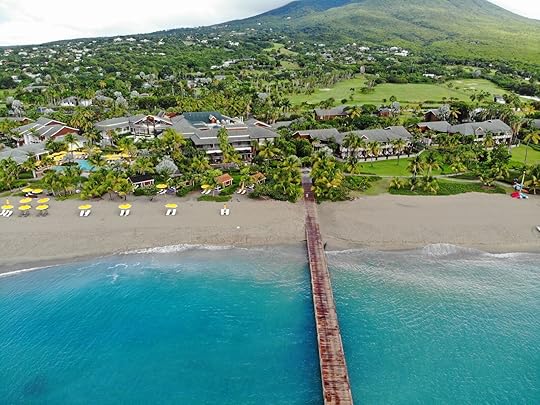
The average US traveler probably can’t point to this island on a map. But that’s totally understandable, as it has just 12,000 residents, needs no traffic lights, and doesn’t have a major airport. But that’s about to change.
The tiny Caribbean island of Nevis is set to embark on a major expansion of the Nevis airport (Vance W. Amory International Airport) this year; financing was recently secured and confirmed by the Nevis Island Administration. In a recent statement, an advisor to the Premier of Nevis on Investment confirmed the expansion is underway and expects it to create hundreds of jobs on the island.
The Nevis airport expansion is expected to include major changes so the airport can accommodate larger commercial flights, and officials confirmed the goal is to receive commercial flights from the US (and accept larger flights from nearby islands). Additions will include a new 5,000-foot runway, new lighting, a hangar and place to refuel, and a much larger terminal.
Currently, reaching the small island roughly 200 miles southeast of Puerto Rico is somewhat difficult for travelers from the US. It requires flying to St. Kitts from Miami, Atlanta, Charlotte, or New York, then taking a water taxi or ferry to Nevis. The island hopes to increase its tourism, which is slowly growing. St. Kitts and Nevis saw 101,484 inbound visitors in 2020, down from 177,278 in 2019. But Nevis sees only a small fraction of those visitors. For example, in 2023, Nevis itself saw only 14,388 visitors, but more than 800,000 visited St. Kitts — almost entirely as single-day cruise ship passengers.
The airport expansion is expected to be started shortly, as of April 2025, but no completion date has yet been announced.
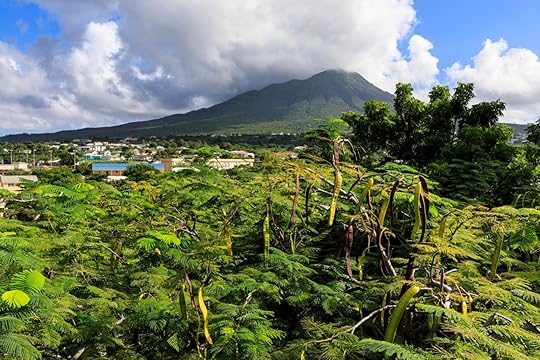
Photo: Eleanor Scriven/Shutterstock
For travelers from the UK, Nevis is most well-known as the preferred vacation destination of the late Princess Diana of the royal family. But for most travelers, it’s known for its lack of crowds and generally clean, pristine beaches. Here’s what you’ll want to do if you make it to the tiny island.Relax on Pinney’s Beach
View this post on InstagramA post shared by Nevis Tourism Authority (@nevisnaturally)
Pinney’s Beach is Nevis’ most famous stretch of sand, known for its golden shoreline, calm waters, and laid-back beach bars. It’s an ideal spot for swimming, sunbathing, or sampling local rum punch with a view of St. Kitts across the channel. If you arrive by ferry from St. Kitts at the Charlestown pier, it’s just a one-mile walk to the beach, which takes about 20-30 minutes. Taxis are also available, and take only about five minutes.
View this post on InstagramA post shared by Botanical Gardens of Nevis (@botanicalgardensnevis)
As you might expect from the island’s location, Nevis has fantastic growing conditions for a huge array of plant species. And the five-acre Botanical Gardens of Nevis is home to hundreds of those plants, including tropical flowers, orchids, water lilies, and even a bird aviary. There’s also a really cool “Rainforest Conservatory” with parrots, waterfalls, and a recreated Mayan temple — an unexpected but very unique spot you won’t want to miss. The garden’s hours vary seasonally, but it’s generally open from 10 AM to 4 PM, three or four days a week.
The Botanical Gardens of Nevis: Montpelier Estates, Nevis, St. Kitts & Nevis
Hike Nevis PeakView this post on InstagramA post shared by Nevis Tourism Authority (@nevisnaturally)
The island’s terrain is dominated by Nevis Peak, a dormant volcano that dramatically rises from the center of the island to an elevation of 3,232 feet above sea level. The hike to the summit passes through lush rainforests and rewards visitors who don’t mind a little sweat with panoramic views of the island and sea beyond. It starts near the Gingerland police station and is about three miles round trip, with an elevation gain of about 2,100 feet. For most people, it takes three to four hours to finish. Start early in the morning to avoid the midday heat.
Nevis Peak trailhead: near 4CPJ+674, St Kitts &, Stonyhill, St. Kitts & Nevis
Soak in historic hot springsView this post on InstagramA post shared by Four Seasons Resort Nevis (@fsnevis)
The Bath Hotel was built in 1778 next to the adjacent hot springs, making it the first hotel in the Caribbean. The nearby natural pools are at a temperature of 104 and 115 degrees Fahrenheit, and were a popular wellness destination for British aristocrats in the 18th and 19th centuries.
Today, the springs are open to the public and popular with both locals and visitors. It’s a communal experience, since the pools are free to visit and and get fairly busy (busy for Nevis, anyway). There’s a small changing area, but otherwise, they’re not too fancy, so bring everything you need. You can reach them by walking right from the ferry station to the edge of Charleston, then taking a right at the fork toward Bath Village. The entire walk takes about 15 minutes. The springs are open 24 hours a day.
Nevis Hot Springs: 49MF+9G8, Unnamed Road, Charlestown, St Kitts & Nevis 
The Most Breathtaking Airbnbs in Jamaica

Bob Marley (and thousands of cliche high school yearbook quotes) once said, “love the life you live. Live the life you love.” It’s impossible not to love your life when you’re in Jamaica. The small Caribbean island is known not only as the birthplace of Bob Marley and reggae music, but also the home of pristine beaches, epic waterfalls, and of course, some of the best rum and coffee you’ve ever tasted. Where you stay plays a huge role in your island experience, so choosing the right accommodation is crucial. From historic villas to modern mansions, these are the luxurious Airbnbs in Jamaica you should bookmark for your next trip.
Traveling to The Caribbean? Check out Matador’s accommodations guides: The Coolest, Cheapest Airbnbs in the Caribbean This Luxury Puerto Rico Airbnb Has the Best Views in Rincón The 7 Best Artvillas in Costa Rica That You Can Book on Airbnb
We hope you love the spaces and stays we recommend! Just so you know, Matador may collect a small commission from the links on this page if you decide to book a stay. Listed prices are accurate as of the time of publication.
Full-service villa with private chef and butler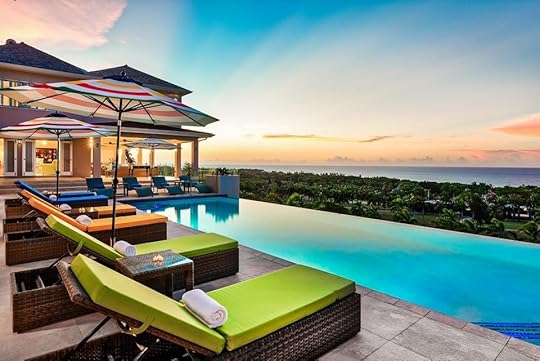 Photo: Airbnb
Photo: Airbnb Photo: Airbnb
Photo: Airbnb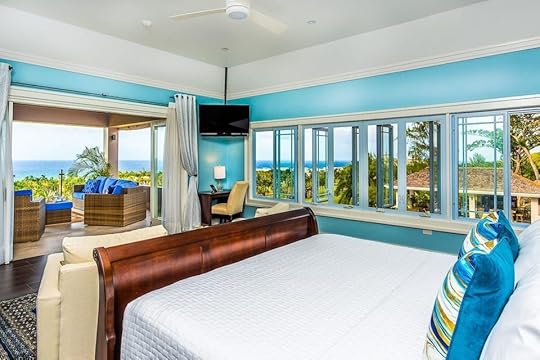 Photo: Airbnb
Photo: Airbnb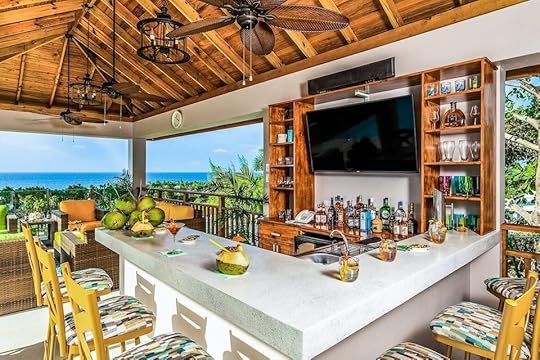 Photo: Airbnb
Photo: AirbnbSee more photos
If your goal is to show up, kick back, and get some serious pampering for a few days, this is the villa for you. Tradewinds is one of the most luxurious Airbnbs in Jamaica, coming with the services of an in-house chef, butler, housekeeper, and chauffeur, so you truly don’t have to worry about anything except relaxing. You’ll even be greeted at the airport by the Club Mobay VIP service and brought directly to the villa. The house has views of the golf courses and the coast — with complimentary membership to the three neighboring golf courses — and outdoor dining areas with an al-fresco wet bar and BBQ.
Ten guests, five bedrooms
Price: $2,119 per night
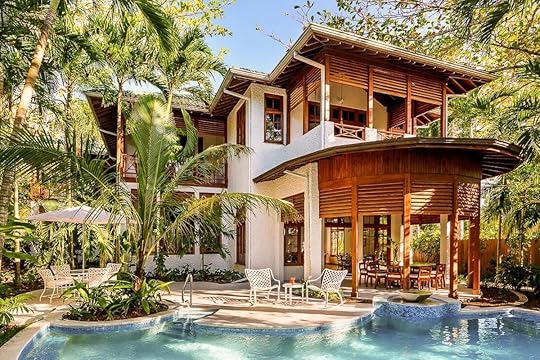 Photo: Airbnb
Photo: Airbnb Photo: Airbnb
Photo: Airbnb Photo: Airbnb
Photo: AirbnbSee more photos
Staying in this 5,000 square-foot villa is as close as you’ll get to feeling like you’re living in the jungle. But with a touch more luxury, of course. Sitting beneath the palm trees just off Seven Mile Beach, this house has a private pool, and a terrace with loungers where you can enjoy the combination of ocean breeze and bowing palm fronds. The villa also includes use of water sports equipment like kayaks and sailboats.
Ten guests, five bedrooms
$1,575 per night
 Photo: Airbnb
Photo: Airbnb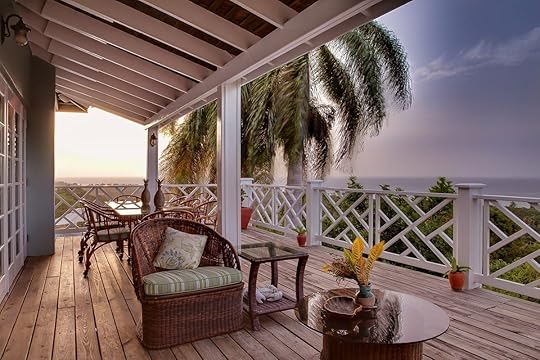 Photo: Airbnb
Photo: Airbnb Photo: Airbnb
Photo: Airbnb Photo: Airbnb
Photo: AirbnbSee more photos
One of the most convenient Airbnbs in Jamaica, this villa is located just minutes from the airport in Montego Bay, and has a swimming pool, tennis court, and even a private chef. All you have to provide are the groceries. The house itself is defined by its elegant archways connecting the open living spaces, and from throughout the property you’ll have stunning views of the ocean. Many rooms open onto covered terraces, where you can enjoy the views from above the treetops.
Twelve guests, six bedrooms
Price: $1,429 per night
 Photo: Airbnb
Photo: Airbnb Photo: Airbnb
Photo: Airbnb Photo: Airbnb
Photo: Airbnb Photo: Airbnb
Photo: AirbnbSee more photos
A glamorous private home overlooking a golf course and the ocean, this villa’s views are the best of both worlds. The furnishings are a combination of antique Asian and tropical colonial decor, making for a truly unique aesthetic. It’s also part of the Spring Farm at Rose Hall gated community, meaning you’ll have access to the beach club’s white sand beach, swimming pool, and bar.
Six guests, two bedrooms
Price: $415 per night
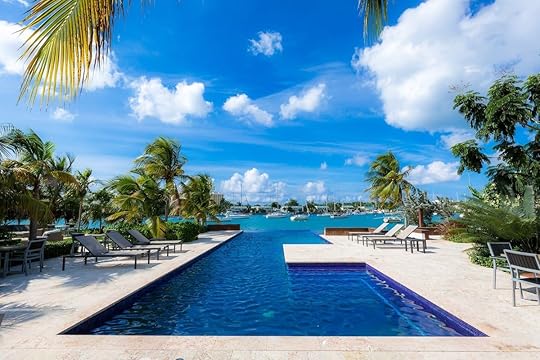 Photo: Airbnb
Photo: Airbnb Photo: Airbnb
Photo: Airbnb Photo: Airbnb
Photo: AirbnbSee more photos
This beach-themed apartment is perfect for a small family. It’s just blocks away from a park and playground, and opens onto a spacious backyard. The apartment’s most eye-catching feature is the shared infinity pool on the pool deck, where you can spend the whole day relaxing and enjoying the ocean views.
Four guests, one bedroom
Price: $169 per night
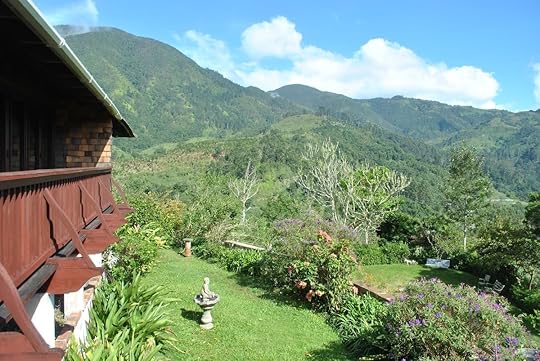 Photo: Airbnb
Photo: Airbnb Photo: Airbnb
Photo: Airbnb Photo: Airbnb
Photo: AirbnbSee more photos
This retreat will introduce you to a greener, more lush side of Jamaica. Silver Hill sits in the Blue Mountains, between Portland and St. Andrew, on what was once the Old Silver Hill Estate and Old Jamaica Spa. The 25-acre property includes a small coffee plantation and two acres of gardens. Guests will have access to walking trails through the forest, and a patio facing the Cinchona Gardens and Top Hill.
Four guests, two bedrooms
Price: $115 per night
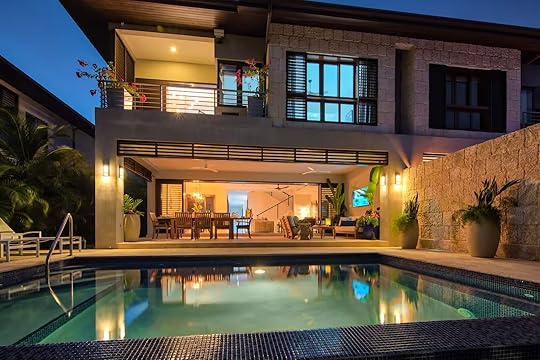 Photo: Airbnb
Photo: Airbnb Photo: Airbnb
Photo: Airbnb Photo: Airbnb
Photo: Airbnb Photo: Airbnb
Photo: AirbnbSee more photos
If you’re looking for a traditional vacation filled with sunshine, swimming, and all the comforts of home – this staffed villa delivers the goods. The property has an infinity pool and access to a private beach shared with residents of this gated community. You can also use the complimentary kayaks and sports amenities. Rental includes airport transfers, a personal chef, and a full-time butler who can summon massage therapists and more.
Eight guests, four bedrooms
Price: $1,634 per night
 Photo: Airbnb
Photo: Airbnb Photo: Airbnb
Photo: Airbnb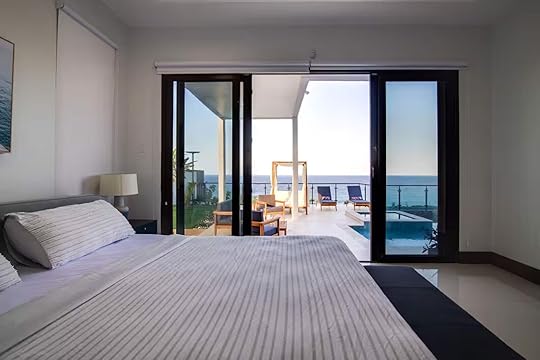 Photo: Airbnb
Photo: Airbnb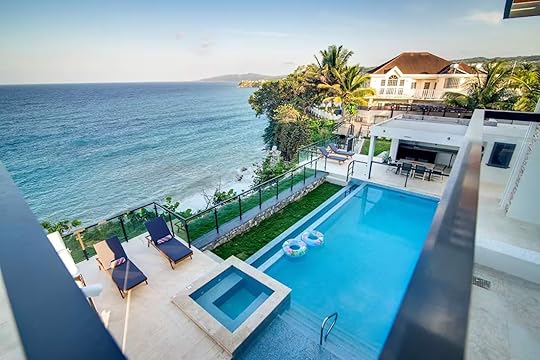 Photo: Airbnb
Photo: AirbnbSee more photosThis contemporary villa has a private pool and hot tub looking over the Caribbean Sea and ample space to sprawl under the sun with a podcast. The interiors are minimalist in style with clean lines and special attention paid to functionality and space – don’t underestimate the size of the bedrooms and communal areas. It’s staffed by a housekeeper and private chef who will curate a bespoke menu as per your requirements.
Eight guests, four bedrooms
Price: $1,200 per night
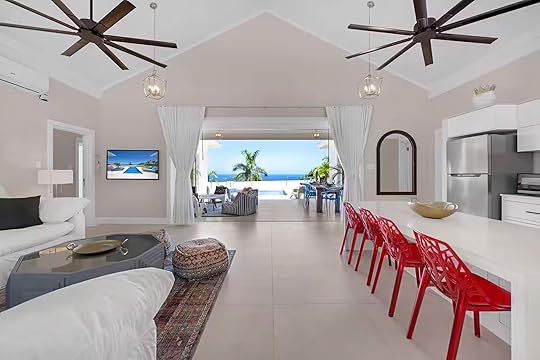 Photo: Airbnb
Photo: Airbnb Photo: Airbnb
Photo: Airbnb Photo: Airbnb
Photo: Airbnb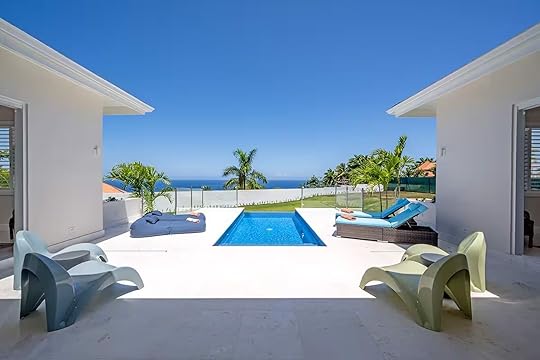 Photo: Airbnb
Photo: AirbnbSee more photosThis Guest Favorite Airbnb in Jamaica’s Montego Bay makes the most of the Caribbean climate with its outdoor bathrooms, landscaped gardens, and poolside rooms. Housekeeping and breakfast are included in the nightly rate whereas a local chef may be hired for a reasonable cost. You’ll also score complimentary access to the Tropical Bliss Beach Club while public beaches and the Half Moon Golf Course are on the doorstep.
Six guests, two bedrooms
Price: $568 per night
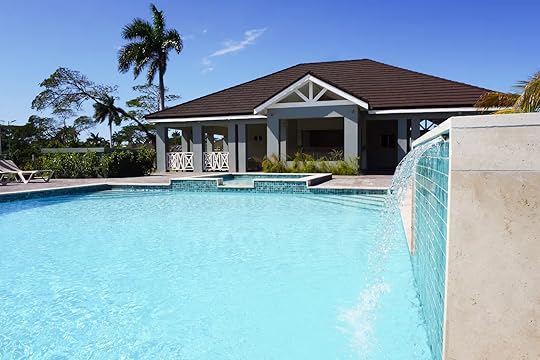 Photo: Airbnb
Photo: Airbnb Photo: Airbnb
Photo: Airbnb Photo: Airbnb
Photo: AirbnbSee more photosThis family-friendly Airbnb in Saint Ann’s Bay, Jamaica, has three bedrooms and three bathrooms. The kitchen is nicely equipped for self-catering although you can outsource any cooking to the host’s recommended chef and spend more time lolling by the pool. This is shared with other residents at this gated community and provides an opportunity to make new friends and pick up tips. The beautiful Columbus Cove is a 10-minute walk from the unit.
Eight guests, three bedrooms
Price: $342 per night
 Photo: Airbnb
Photo: Airbnb Photo: Airbnb
Photo: Airbnb Photo: Airbnb
Photo: Airbnb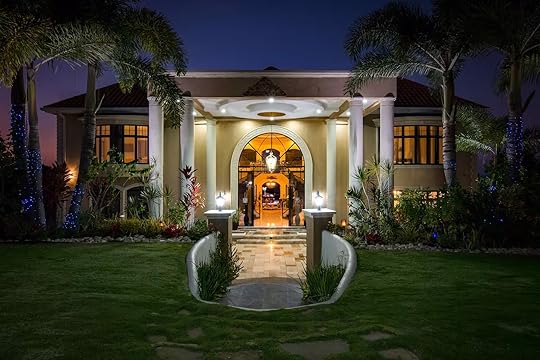 Photo: Airbnb
Photo: AirbnbSee more photosWhy book a hotel room when you can book a resort? This luxury villa rental sits on a lush compound overlooking the sea and has a pool with a swim-up bar and hot tub. There are five large bedrooms and a movie theater indoors. This fully-staffed Airbnb in Discovery Bay comes with an entourage of butlers, chefs, and housekeepers. Additional options include renting a yacht for the day or even a wedding service.
Ten guests, five bedrooms
Price: $1,750 per night
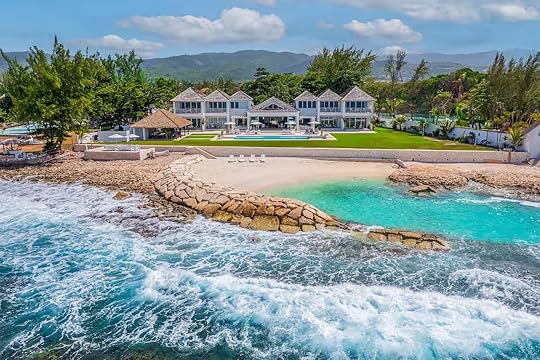 Photo: Airbnb
Photo: Airbnb Photos: Airbnb
Photos: Airbnb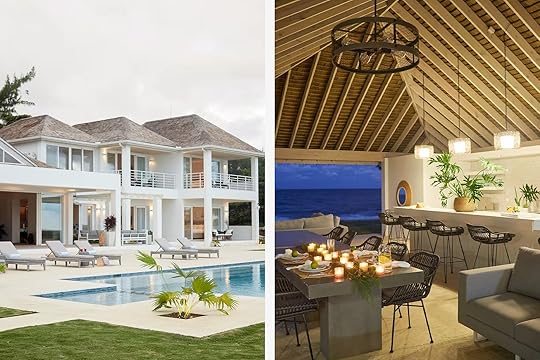 Photos: Airbnb
Photos: AirbnbSee more photosWhen divided between 25 guests, this nine-bedroom Airbnb in Jamaica is a steal for large groups. It’s staged directly on the beach in Ocho Rios on the north coast where you’ll be able to take your pick from waterfalls and other adventurous excursions. Deluxe amenities include a huge private pool with a basketball hoop and spa, a games room, a home gym, and a movie theater. The villa is staffed around the clock to ensure every need is met.
Sixteen guests, nine bedrooms
Price: $5,363 per night
 Photo: Airbnb
Photo: Airbnb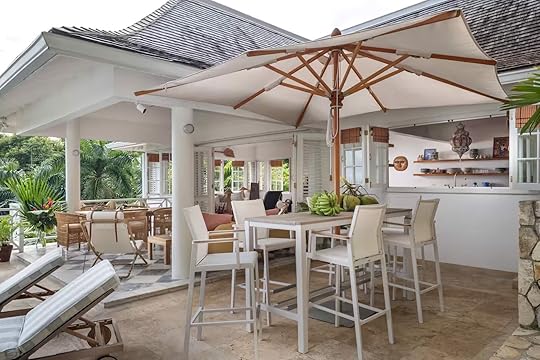 Photo: Airbnb
Photo: Airbnb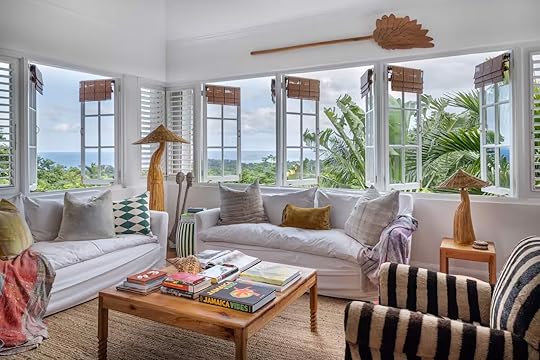 Photo: Airbnb
Photo: Airbnb Photo: Airbnb
Photo: AirbnbSee more photosAllegedly, John Lennon was a regular at this Georgian-era villa in San Antonio. Besides the heritage architecture which is rare to find on the vacation rental scene in Jamaica, it’s remarkably private and touts a second-floor swimming pool with ocean views and an open invitation to a private beach. The kitchen is kitted out with Viking appliances whereas the rest of the home is accented by hefty teak and cedar cabinetry. The staff can be as hands-on as you wish.
Twelve guests, six bedrooms
Price: $1,975 per night
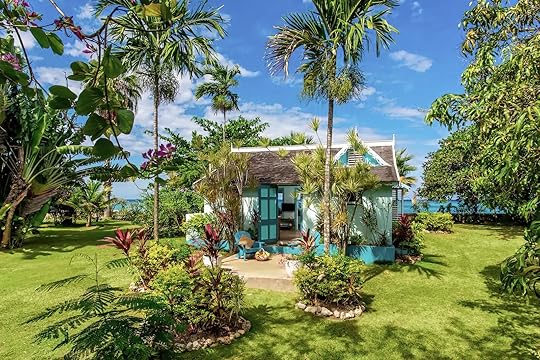 Photo: Airbnb
Photo: Airbnb Photo: Airbnb
Photo: Airbnb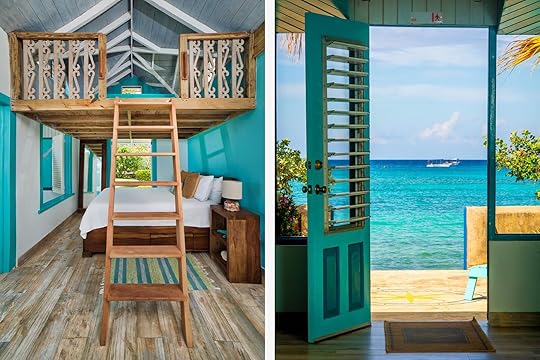 Photo: Airbnb
Photo: AirbnbSee more photosThis quaint cabin rental in Jamaica offers quiet luxury in a humble setting. The shack is thoughtfully designed with shuttered windows and shiplap interiors. The main bedroom is tucked away on the first floor while the mezzanine loft is suitable for children or teenagers. In place of a typical backyard, you have the Caribbean Sea – best enjoyed with the bodyboards provided by the host.
Four guests, one bedroom
Price: $342 per night
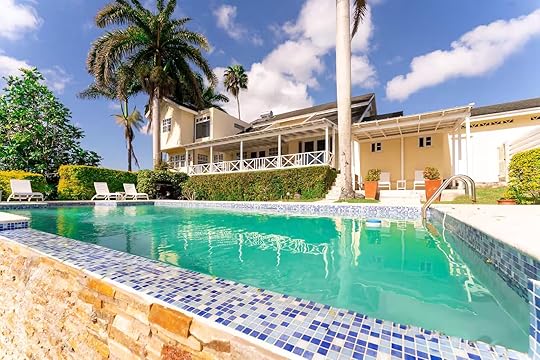 Photo: Airbnb
Photo: Airbnb Photo: Airbnb
Photo: Airbnb Photo: Airbnb
Photo: Airbnb Photo: Airbnb
Photo: AirbnbSee more photosThis peaceful Airbnb on Jamaica’s north coast stands between the beach and Cockpit Country. Being directly on the banks of the Martha Brae River means booking a rafting excursion is a must. The open-concept first floor comprises a large kitchen, dining area, and lounge while the backyard balances sunny and shady spots around the pool. The housekeeper lives on-site and offers her wizardly skills in the kitchen at an additional cost.
Twelve guests, six bedrooms
Price: $1,061 per night
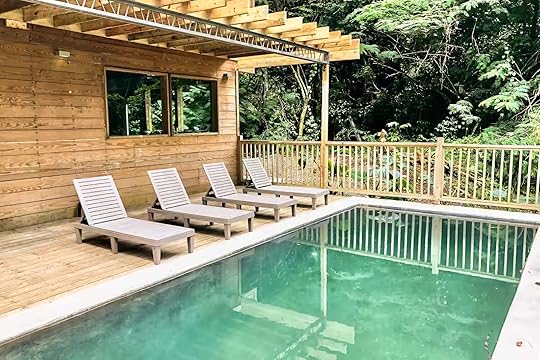 Photo: Airbnb
Photo: Airbnb Photo: Airbnb
Photo: Airbnb Photo: Airbnb
Photo: Airbnb Photo: Airbnb
Photo: AirbnbSee more photosEscape to the jungle at this high-end eco Airbnb in Jamaica’s Blue Mountains. It sits on 20 acres of private land and you’ll have access to a personal spring and waterfall, aptly named “Beauty Fall”. Wild swimming is non-negotiable but you can also relax in the chalet’s private pool. The cabin features such luxuries as air-conditioning, Tempurpedic mattresses, and oversized rainfall showers. Bear in mind that the closest grocery store is a 30-minute drive.

Eight guests, three bedrooms
Price: $597 per night
American Airlines to Offer Free Inflight Wi-Fi for AAdvantage Members by 2026

Competition among airlines in the United States means that when one company changes its operations, the others are usually close behind. Take, for example, the pressure to add pared-down budget options where everything from bags to picking a seat is paid for à la carte. Recently, adoption of free inflight Wi-Fi has seen the same pattern. United Airlines announced it was rolling out limited free Wi-Fi to flights by the end of 2025, and Delta moved to offer free service to all international flights shortly after.
Now American Airlines is onboard after a trial in March, and will have free inflight Wi-Fi to all AAdvantage loyalty program members starting January 2026.
The new service, sponsored by AT&T, will be available on roughly 90 percent of American’s mainline aircraft outfitted with Viasat and Intelsat satellite connectivity, according to the airline. The rollout follows months of performance testing on select routes, with American stating the system exceeded internal benchmarks. The initiative also includes plans to retrofit over 500 regional jets with high-speed Wi-Fi by the end of 2025.
“Our customers greatly value staying connected while in the air,” Heather Garboden, chief customer officer at American Airlines, said in a press release. “We’ve been working diligently to outfit our aircraft with best-in-class high-speed Wi-Fi and, together with AT&T, are proud to offer those services at no cost to our most loyal customers.”
The move brings American in line with a growing industry standard. Delta began offering free Wi-Fi to SkyMiles members on most domestic flights in 2023. United Airlines, meanwhile, is deploying free inflight internet powered by SpaceX’s Starlink satellite system. JetBlue has long provided free connectivity on all flights, regardless of loyalty status.
American was one of the few US carriers to charge passengers for Wi-Fi access. By linking the service to AAdvantage membership, the airline not only enhances the onboard experience but also incentivizes signups to its loyalty program, which is free to join.
The partnership with AT&T — described by the airline as a union between “two iconic American brands” — allows American to offer the service without passing costs to customers, at least for now. While pricing details for non-members remain unconfirmed, the airline emphasized that the initiative is exclusive to AAdvantage participants.
Installation and service management will depend on satellite providers Viasat and Intelsat, whose high-speed systems currently power the majority of American’s Wi-Fi-enabled fleet. According to the airline, the network will eventually deliver more complimentary internet access than any other US carrier. 
April 14, 2025
There Is No ‘Planet B’: The Best Earth Day Celebration in Every State in 2025
 There is no ‘Planet B’: The Best Earth Day Celebration in Every State in 2025
There is no ‘Planet B’: The Best Earth Day Celebration in Every State in 2025 It may seem obvious that we should care about keeping our planet clean and healthy, but until the 1970s, there was no designated day to recognize the importance of protecting Earth.
Earth Day began in the United States in 1970, conceived by then-senator Gaylord Nelson. An environmentalist concerned about the growing damage humans were causing the planet, he took action in 1969 following an oil spill in Santa Barbara. He was inspired by anti-Vietnam War education efforts and gathered a small group to organize the event around the country. It was also the same year the Environmental Protection Agency was established, and celebrations were held around the country at more than 1,500 universities, in major cities, and at thousands of schools. More than 20 million people participated in an Earth Day event of some kind that first year, representing roughly 10 percent of the population of the US at the time. Both Republicans and Democrats supported the event, which was generally seen as a bipartisan effort (until the current era of extreme political polarization). Since the 1970s, Earth Day has had measurable, positive impacts on the planet.

Photo: PeopleImages.com – Yuri A/Shutterstock
Today, Earth Day is celebrated annually on April 22, though many events span a week or even the entire month. And it’s gone global, too. In 2009, the United Nations General Assembly officially recognized April 22 as “International Mother Earth Day,” noting in the proclamation that “the Earth and its ecosystems are our home” and need to be protected.
Eco-friendly travelers know the planet is in peril, and the travel industry contributes to that in many ways. So this year, why not consider attending an Earth Day event, whether you’re on the road in a new state or staying home that day? Even if you already travel sustainably — buying eco-friendly sustainable clothing and outdoor gear and even toiletries, choosing hotels committed to sustainability, or offsetting your carbon emissions — attending an Earth Day event can still offer new ways to be kinder to the planet. Many events include chances to volunteer and aid in clean-up projects, while others offer fun programs like lectures and vegetable markets. If nothing else, attending one of the Earth Day celebrations below is a great way to show the world that Earth Day still matters, and that you’ll continue to work to protect the most beautiful places and environments around the world.
To help get you in an eco-friendly mood, we’ve rounded up one fun Earth Day event in every state, from massive festivals to clean ups, garden parties, educational programs, and more.
AlabamaHays Nature Preserve is a 538-acre natural area in Huntsville, and each April, it hosts an Earth Day celebration. This year, it’s on April 12 from 10 AM to 2 PM and will feature hands-on demonstrations, exhibits on local wildlife habitats, native plant giveaways, family-friendly DJ sets, and educational sessions led by area environmental experts. There’s even an educational bat show scheduled for 2025.
Alaska
Alaska has so much going on that we couldn’t pick just one. This April, you may want to attend the Alaska Hummingbird Festival, celebrating the return of Rufous Hummingbirds to Tongass National Forest near Ketchikan. The 2025 festival runs from April 4 to 26, with an art show, guided bird walks, and educational programs at the Southeast Alaska Discovery Center. But if you’re more into bald eagles, book last-minute flights to attend the Stikine River Birding Festival in Wrangell (April 23 to 27), to celebrate the spring migration of shorebirds, including the largest springtime concentration of bald eagles in North America. The festival also includes bird walks, lectures, art workshops, and activities for all ages.Arizona
On April 19, Arizona’s Red Rock State Park will celebrate Earth Day against the stunning backdrop of Sedona’s red rock formations. The festival is free and includes live wildlife presentations, nature hikes, games, and educational booths. It’s a great day to explore the park for some spring hiking and learn about the fragility and importance of America’s desert environments.Arkansas
On April 26, the Botanical Garden of the Ozarks will hold its Earth Day Garden Market, combining Earth Day festivities with an annual beloved plant sale. Its an all-ages festival that includes interactive activities, crafts, games, live music, and more than 20 local vendors selling plants, flowers, pottery, garden accents, and unique artisan products. If you have a green thumb, don’t miss it. You’ll want to get tickets and sign up for guided walks in advance.California
California has several impressive Earth Day celebrations, but Santa Barbara’s Earth Day Festival is certainly the most significant. It’s considered one of the largest Earth Day festivals on the West Coast and is one of the longest-running Earth Day celebrations in the country, drawing media attention, celebrity guests, and thousands of attendees. It celebrates the town’s historical significance as the site of the 1969 oil spill that beget the idea for Earth Day. 2025’s celebration is April 26-27 at Alameda Park in Santa Barbara.Colorado
Colorado’s Garden of the Gods is hosting an Earth Day celebration on April 19, with tons of indoor and outdoor programming. That includes booths and displays from local environmental organizations, seed plantings, crafts, giveaways, lectures, presentations, and access to the stunning family-friendly park trails.
Our Favorite Sustainable Travel Gear
This Earth Month, build your travel setup with less impact with this sustainable travel gear.
Visit
Our Favorite Sustainable Travel Gear
Read more
Your Travel Clothing Claims to Be Eco-Friendly. But Is It?
By following these guidelines you can tell if your travel clothing is as green as it claimes.
Visit
Your Travel Clothing Claims to Be Eco-Friendly. But Is It?
Read more
Your Outdoor Gear Will Soon Be Circular. Meet the Brands Making It Happen.
These brands are true sustainability leaders.
Visit
Your Outdoor Gear Will Soon Be Circular. Meet the Brands Making It Happen.
Read more
Connecticut
One standout event in Connecticut is the Norwalk Earth Day Festival, a lively event focused on sustainability and community action. Attendees can listen to live music, sample bites from food trucks, jump in on yoga sessions, plant trees, hang out in the beer garden, and browse interactive and educational exhibits. The event is structured around the five elements of nature — Earth, Air, Water, Fire, and Spirit — all marked by colored flags to guide attendees. There are also activities like a Veterans Park cleanup and group bike ride with Sound Cyclists.Delaware
There’s a lot going on April 19 at IWC Earth Day Celebration and Vendor Market at the InnerSource Wellness Center in Wilmington. The event celebrates Mother Earth with an Indigenous vendor market, educational sessions, and a community potluck and barbecue. One unique aspect of the celebration includes a seed swap, where you can bring excess seeds from your garden and walk home with new seeds from someone else’s. With a bit of a New Age twist, this celebration is perfect for anyone who wants to thank Gaia for the wonders of planet Earth.Florida
Florida’s Seminole Tribe is active throughout the state, and on April 17, you can celebrate the Earth while learning about Seminole culture. “Earth Day the Native Way” is held at the Ah-Tah-Thi-Ki Museum and includes cultural performances like Aztec and Stomp dances, environmental education, workshops on beekeeping and gardening, and lots of extra activities. Attendees can sign up for bird watching tours, sit in on cooking and food prep demonstrations, or even learn the basics of scientific marine research.Georgia
The Children’s Museum of Atlanta doesn’t celebrate Earth Day — it celebrates Earth Month. The list of activities throughout April is quite long, ranging from opportunities to learn about building plant trellises to science classes, public story times, art classes, and more. Note that it’s a children’s museum, and adults aren’t allowed in without kids. So buddy up with a friend who has little ones if you’re also interested in building a home trellis. Hawai’i
The Waimea Valley Earth Day event is a two-fold opportunity: volunteers can help with projects like invasive species removal, while attendees can explore the sustainability village, with vendors, live music, speakers, and dance performances. It’s held this year on April 19, and you’ll probably want to book your admission in advance, as guided cultural tours and waterfall hikes can make the area feel quite busy on popular weekends. Idaho
If you’re in Boise this April, you may want to stop by the City of Boise Earth Day Celebration on April 19, 2025, at Veterans Memorial Park. It’s a free event with hands-on activities and Earth Day art projects, a vendor area, eco-friendly demonstrations, food trucks, and live music. There’s also an electric vehicle show, with electric cars, e-bikes, and new electric trucks. It runs from 10 AM to 4 PM.
How to Find Out if Your Hotel Is Actually Sustainable – and Four Beautiful Ones That Are
Some properties are doing it right.
Visit
How to Find Out if Your Hotel Is Actually Sustainable – and Four Beautiful Ones That Are
Read more
More hotels are becoming certified B-Corps. Here's What That Actually Means.
It's possible to stay in a hotel that aligns with your values.
Visit
More hotels are becoming certified B-Corps. Here's What That Actually Means.
Read moreIllinois
In the Chicago area this Earth Day, visitors can help keep the city green, literally. Friends of the Parks organizes an annual park cleanup around the city, taking place on April 26. Thousands of volunteers across nearly 100 parks in Chicago will participate in activities like litter cleanups, mulching, and other park restoration efforts. You can sign up in advance online. But if you’d rather have more of a festival atmosphere, head instead to the Earth Day Celebration at BUILD Chicago’s Austin Campus, also on April 26. The festival has recycled art projects, a seed swap, a resource fair, cooking demonstrations, movie screenings, and even a reptile showcase. Indiana
For a celebration intimately tied to natural living and appreciating the planet, head to the Earth Day Festival at Saint Mary-of-the-Woods, hosted by the White Violet Center for Eco-Justice. You can sit in on demonstrations on spinning, weaving, and felting, cuddle up with alpacas and chickens during a barnyard visit, attend wildlife presentations, and browse the eco-friendly vendor area while listening to live music. There’s also a very popular local bake sale. It runs 11 AM to 3 PM on April 26. Iowa
The Earth Day celebration in Clear Lake features a weeklong series of events open to anyone looking to make a difference. Events held between April 21 and 26 include “Trash Bash” (a city-wide public clean-up), 5K and 10K races, a huge “Green Expo” and farmer’s market, and the popular “Outdoor Fest.” Outdoor Fest is more like a community carnival, with a bounce house, food trucks, live music, and even opportunities to meet a bald eagle.Kansas
Few things inspire eco-action like live music. So if you’re near Lawrence, Kansas, on April 19, head to South Park for the Lawrence Earth Day Fair. The event takes place from 1 PM to 4 PM and features live music, local food vendors, environmental exhibits, and children’s activities. It’s free and co-hosted by the City of Lawrence and the Watkins Museum of History, so you may even learn a thing or two about the area’s natural history while you’re there. Local organizations, including the Lawrence Humane Society, will be present to provide information on volunteering, fostering, and other ways to get involved in community initiatives. No tickets are required, but you can reserve a spot online.
25 Places to Go in 2025 Spotlight: Sustainable Travel in Maui
After the devastating fire, Maui is welcoming people back with a sustainability-first mindset.
Visit
25 Places to Go in 2025 Spotlight: Sustainable Travel in Maui
Read more
Your Sustainable Travel Guide to Costa Rica
Sustainable travel in Costa Rica is all about learning to appreciate and preserve its diverse ecology and landscapes.
Visit
Your Sustainable Travel Guide to Costa Rica
Read more
These Organized Trips Blend Reforesting Efforts With Experiential Travel
These reforesting tours prove you can have fun and make a difference at the same time.
Visit
These Organized Trips Blend Reforesting Efforts With Experiential Travel
Read more
Kentucky
Vibrant and engaging is how the Earth Day celebration at the Doran Arboretum in Murray, Kentucky, is often described. The day kicks off with the popular 5K and one-mile Mutt Strut, followed by greenhouse tours starting at 9 AM. Throughout the day, visitors can browse more than 30 vendor booths with eco-friendly products, educational displays, and community initiatives. The event is also a great place to learn about the importance of activism, including a talk by eco-advocate Beau Dodson on current environmental challenges and practical steps individuals can take to make a difference. There’s a plant and flower sale, too. Louisiana
For the last 25 years, the Louisiana Bucket Brigade has thrown one heck of an Earth Party in New Orleans. This year’s festival will feature live music performances by local bands and artists, surrounded by food from local vendors, plus family-friendly games and activities — all in a city known to party like no other. But it’s not all about revelry at this party, and one of the primary goals of the Earth Day Festival is to raise awareness about environmental issues affecting Louisiana related to air quality, pollution, and community resilience. Held April 19 from noon to 6 PM, the event is free, though tickets can be reserved in advance. Maine
This Earth Day in Maine, you can celebrate with the Maine Audubon Society, which is hosting a long list of planet-focused events. That includes multiple park conservation events, garden volunteer days, Indigenous-led trail walks, beach cleanups, opportunities to contribute to citizen science projects, and even a fun, bird-themed trivia night celebrating the launch of a new hard seltzer from Après Maine. Naturally, a portion of each drink purchased goes back to the non-profit, which was founded in 1897 to protect the state’s birds and avian environments. Maryland
No matter where you are in Maryland this April, you can likely find a way to protect the planet at a Maryland state park. Each year, the Maryland Department of Natural Resources hosts and supports dozens of events around state parks. Last year’s events included a beach cleanup at Sandy Point State Park, native pollinator plantings at Gunpowder Falls State Park/Jerusalem Mill Historic Village, an Earth Day festival at Adkins Arboretum, or a guided tree hike at Pocomoke River State Park. Keep an eye on the DNR website to see soon what’s on the docket for 2025’s Earth Day festivities. Massachusetts
Earth Day Boston organizes a handful of eco-friendly events in April each year, but in 2025, one of the best to attend may also be one of the most visible: the “United We Rage” demonstration. It’s a rally and March held at 1 PM on April 26, starting at the Hynes Convention Center, across from the Boston College of Architecture. It’s a peaceful but meaningful March on public streets designed to bring attention to politicians’ and decision makers’ failures to act to protect the planet. Bring your signs, your friends, and your sense of civic responsibility to help show that you prioritize people and the planet. Michigan
If you love trees, head to “Awe in the Arb” on April 22, 2025, from 10 AM to 5 PM. The event connects arboretum guests to nature through reflection, artistic connections, and creativity, with events like poetry readings, guided nature walks, yoga sessions, and hands-on workshops. it’s at the University of Michigan’s Nichols Arboretum and is entirely open to the public. It’s free to attend, and no reservations are needed.
Air Travel Pollutes Relentlessly. Is Carbon Removal Part of the Solution?
It will take more than reducing emissions to solve climate change.
Visit
Air Travel Pollutes Relentlessly. Is Carbon Removal Part of the Solution?
Read more
Illinois Recharged: Route 66 in the EV Era
Route 66 is the birthplace of the American road trip. See how it has a new relevance in the EV era.
Visit
Illinois Recharged: Route 66 in the EV Era
Read more
Minnesota
On Saturday, April 19, in Minneapolis, anyone can give back for a few hours by joining the 31st Annual Minneapolis Earth Day Cleanup. It’s a huge community service event in which volunteers clean and beautify 42 sites throughout the city’s park system. Since 2008, volunteers have collected more than 165,000 pounds of garbage. There’s no need to register — just show up at whichever site you’d like, grab a bag and gloves, and help keep the “City of Lakes” clean and beautiful for the year ahead.Mississippi
The Mary C. O’Keefe Cultural Arts Center in Ocean Springs, Mississippi, hosts events throughout the year, and Earth Day is no exception. On April 19, visitors are invited to “help be better stewards of the Blue Planet upon which we depend” at the event co-hosted by the Ocean Springs Environmental Alliance. The event includes food vendors, an informational marketplace, live music from local singer-songwriters and an environmental scavenger hunt for kids and families. It’s free to attend, running from 10 AM to 2:30 PM.Missouri
The St. Louis Earth Day Festival is a two-day celebration of the Earth, and 2025’s theme is “climate hope” with programming to “inspire and empower solutions to climate challenges.” There’s live music, roughly 200 vendors, an eco-friendly fashion show, and numerous food vendors from the city’s “Green Dining Alliance,” with a focus on vegetarian and vegan foods. It’s totally free to attend and runs from 11 AM to 5 PM on April 26 and 27 at St. Louis’ Forest Park. Montana
April 19 is the Earth Day Expo in Kalispell, Montana, with a mix of interactive and low-key programming. The day starts with a keynote address from cookbook author and Indigenous chef Mariah Gladstone, who is also doing the lunch presentation and teaching an afternoon kitchen class. Kids can join junior Audubon birding classes, build solar cars, or sit in on a “Wings of Prey” presentation, while adults can browse dozens of booths or sit in on panels on topics ranging from fire resilience to food security to local Montana conservation efforts. The Earth Day 2025 event runs from 9 AM to 3 PM and is totally free to attend. Nebraska
Earth Day Omaha is a pretty large event, sponsored by everyone from the Sierra Club to the local zoo and University of Nebraska. More than 100 vendors will be on hand, as will local food trucks and various green exhibitors. One of the coolest things to see may be the presentation from the Nebraska Statewide Arboretum & Nebraska Forest Service, who will demonstrate tree-climbing techniques. Other highlights include a tree-planting demonstration and an electric vehicle show featuring bikes and cars. It happens this year on April 26 from 11 AM to 4 PM.
Aspen's 'Sustainability Guy' Wrote a New Book, and It's a Must-Read for Outdoorspeople
Visit
Aspen's 'Sustainability Guy' Wrote a New Book, and It's a Must-Read for Outdoorspeople
Read more
Wellness and Sustainability Shine at This Historic Eco-Resort in the Austrian Alps
The property is at once historic and strikingly luxurious.
Visit
Wellness and Sustainability Shine at This Historic Eco-Resort in the Austrian Alps
Read more
Nevada
Las Vegas usually gets most of the attention in Nevada, but this Earth Day, Reno is the place to be. The biggest little city’s Idlewild Park sits alongside the Truckee River, and on April 19, it hosts a huge Earth Day celebration. It includes live music on multiple stages, a huge arts and crafts fair with vendors from around the state, and lots of festival-style programming, The event is on a Saturday, so you can make a long weekend of it by going to the celebration, then spending Sunday sightseeing or skiing near nearby Lake Tahoe, where extensive environmental protection programs have helped keep the lake impossibly blue.New Hampshire
You can celebrate Earth Day every weekend in April with events at New Hampshire’s Massabesic Wildlife Center. The historic farm is open every weekend for events that include activities across the grounds, including guided morning birding walks, nature exhibits, and even a 4 AM dawn bird walk on April 26. There’s a full calendar of events on days when it’s open (Wednesday through Saturday), but you can always visit and go birding on your own, if you’re not keen on organized adventures. New Jersey
The Holmdel Earth Day Festival on April 27 at Bayonet Farm is a good event for Jersey residents who appreciate a blend of nature, history, and community engagement. The event starts with a two-mile guided walk around the farm’s wooded trails, then moves to a variety of programming ranging from a drum circle to beekeeping presentations to tours of the historic Harding House. The event runs from 9 AM (for the guided walk) to 5 PM, with an on-site deli and bake sale (among other vendors) for when you work up an appetite. Parking, admission, and all events are totally free.New Mexico
The biggest Earth Day event in New Mexico is the annual Earth Day Festival at Balloon Fiesta Park in Albuquerque. The theme in 2025 is “Our Power, Our Planet,” focused on renewable energy. There’s a pavilion with talks and lectures, a large vendor area, an arts show and competition, and a lot of energy — about 4,000 people attended in 2024. Other areas in New Mexico are also doing events, from brewery parties to local cleanup and outdoor events. New York
Earth Day Initiative in New York City is one of the biggest eco-festivals in the country, held in Union Square on April 17. There’s an absolutely massive lineup of live music from popular bands and performers, climate art and kids programs, a big vendor area with dozens of organizations, and interactive workshops. It’s free to attend, but if you register on the event website, you’ll get an email with links to specific events and how to sign up for each activity. North Carolina
“Music. Art. Education. Awareness. Celebration.” is the motto for North Carolina’s Earth Day Jam, which sums up what you can expect at the one-day, laid-back music festival. It’s a fundraiser for an organization that provides nature-based community therapy and shared gardens at schools. It’s free to attend, but you can buy VIP tickets if you want a better viewing spot and access to local fare. Think of it as a party in the park vibe, with more than a dozen music acts and plenty of food and drink vendors to ensure you stay in good spirits throughout the day. It’s on April 12 this year. North Dakota
If you’re anywhere near Theodore Roosevelt National Park on April 20, consider joining in on a special Earth Day guided hike to the only sandstone arch in the entire park. It’s a special event led by rangers, who will guide guests along the roughly four-mile hike. No advance registration is required and it’s free to attend, though you’ll need to pay to enter the park ($30 per car, or free with a national parks pass). The hike starts at 10 AM and meets at the Halliday Well Trailhead.
New Haven's All-Electric Hotel Is Raising the Bar for Green Luxury
All of the comfort. None of the fossil fuels.
Visit
New Haven's All-Electric Hotel Is Raising the Bar for Green Luxury
Read more
These Eco-Friendly Tulum Domes Form One Of Mexico's Coolest Airbnbs
Nahku Tulum is one of the most stunning Airbnbs on the Riviera Maya.
Visit
These Eco-Friendly Tulum Domes Form One Of Mexico's Coolest Airbnbs
Read more
Ohio
Rock out and appreciate the Earth from the ground up in Columbus with a unique way to celebrate Earth Day 2025. The Ohio Statehouse is offering a fossil tour on April 19th at noon, led by expert geologists. They’ll guide attendees through the building’s limestone walls and columns, which contain fossils of prehistoric organisms. It’s a perfect event for geology enthusiasts, rock lovers, and aspiring paleontologists. While there’s no cost for the tour, interested visitors are asked to RSVP in advance of the event. Oklahoma
OK Earth Day Celebration is a fun event held in partnership with traditional music and art, as well as Indigenous food experiences. The events stages will welcome multiple live music acts on April 20, including a drum circle and performances from Cherokee singers and songwriters. Speakers include everyone from environmental journalists to Cherokee film directors to leaders at the Sierra Club, and programming ranges from classes on traditional Indigenous foods to movie screenings, outdoor events, and a “farm to fire” locally sourced dinner. Some events require tickets, which you can buy in advance online. Oregon
There’s a lot going on in Oregon around Earth Day, including Cannon Beach’s annual “12 Days of Earth Day” event. It includes a parade, street fair, and quirky sessions like lectures on how to spot tufted penguins. But if you’re closer to Portland, a unique event definitely worth attending is one of the events of the Portland EcoFilm Festival, focused on new Indigenous short films. It’s on the evening of Tuesday, April 22, at the Hollywood Theatre. The screening will feature five short films about Indigenous communities around the world, and will be followed by a conversation with the movies’ directors. Buying tickets in advance is highly recommended. (There’s also an environmental justice-themed day on May 1). Pennsylvania
Regenerative farming is one of the most sustainable ways to produce food in the world, and at the Earth Day Celebration at Pocono Organics in Pennsylvania, you can tour a working regenerative farm during a free event on April 26. Visitors can walk the farm, learn about techniques like composting and organic growing, meet live local animals, and browse a vendor village featuring everything from e-bikes to organic soap. There are also local organic food trucks and sponsors like local wineries.
To See How Phoenix Is Adapting to Climate Change, Start With a Pint of Beer
Cheers to the future.
Visit
To See How Phoenix Is Adapting to Climate Change, Start With a Pint of Beer
Read more
How Island Nations Are Using Tourism to Fight the Impacts of Climate Change
Travel can help safeguard islands in an ever-changing world.
Visit
How Island Nations Are Using Tourism to Fight the Impacts of Climate Change
Read more
Rhode Island
In Rhode Island, the Aquidneck Resilience Earth Day Party is a luxuriously laid-back Earth Day gathering, held at Newport Vineyards. The event is a chance for locals and visitors to learn about efforts to protect the small state’s sensitive ecology. The event starts at 5:30 PM on Earth Day (April 22), and at 6 PM, Aquidneck Resilience will be presenting its plan to address climate change on Aquidneck Island, part of the popular Narragansett Bay tourist region. There’s a cash bar and the event is free to attend, but guests are asked to register online in advance.South Carolina
Anyone in South Carolina who likes camping may want to attend the Earth Day Campout at Anne Springs Close Greenway. The large park is celebrating Earth Day over the weekend of April 11-13, giving guests easy access to activities like live music, a fishing contest, cookouts, guided hikes, archery and yoga classes, reptile meet and greets, farm tours, and more. Camping requires advanced reservations, but many of the daytime activities are open to drop-in visitors. South Dakota
Western Dakota Tech is hosting an enormous open house on April 26. Visitors can tour the school’s Aquaponics and plant lab, or join in on discussions on renewable energy or yoga classes. There’s a clothing swap and shop, an adoptable pet pop-up, an electric vehicle show, on-site electronics recycling, and even classes on floral arranging. It’ll have all the usual fun draws, too, like family activities, food vendors, a petting zoo, and a Strider bike course for little ones learning the joy of two wheels. Tennessee
Across the state, Tennessee State Parks host various Earth Day activities. At Paris Landing State Park, you can craft bee boxes to support native bee populations, while Meeman-Shelby Forest State Park offers a hands-on workshop where participants can recycle old paper into DIY seed paper for planting. Events take place between April 18 and 27, depending on the park. f you’ve got a little one in the family, consider celebrating sustainable parenting at the Babies & Blooms Earth Day Festival. This event features the “Great Cloth Diaper Change” race, local eco-friendly vendors, games, raffles, and more.
If you’re in Gatlinburg, head to SkyPark on April 22. Visitors can pick up native Tennessee wildflower seed packets and toss them from the bridge to support local pollinators and foster a healthy ecosystem of plants and animals.
TexasMany people don’t realize the slogan “Don’t Mess With Texas” originated from the conservation movement. It was created by the Texas Department of Transportation in 1985 to reduce littering on roadways. And the massive Earth Day Expo in Dallas continues that tradition, with five days of world-class thought leaders covering topics from marine ecosystems and climate change to green business and environmental policy. It’s one of the biggest events of its kind and is a chance not just for education, but also professional networking, career development, and opportunities to make a more serious commitment to Earth-friendly business policies. Advance registration is essential. Utah
Zion National Park gets in on the Earth Day action this year with Zion Chalk & Earth Fest, happening April 26 and 27 at the Zion Canyon Village in Springdale. There’s live music, a beer garden, and dozens of talented chalk artists creating sidewalk masterpieces for the public. It’s an always-popular event, especially considering the crowds Zion National Park has been known to draw on spring weekends. Much of the art at the festival is nature-themed, because as the organizers point out, “Earth without art is just eh.” Vermont
Vermont is known for being one of the quirkiest states in the US, and in the spring, April showers brings… a lot of mud. That may be why Vermont hosts one of the quirkiest Earth Day traditions: the Earth and Space-tacular Festival on April 20. Held at ECHO Leahy Center at Lake Champlain, this event features hands-on activities exploring Earth and space science. But the highlight? The annual “Mud Fling,” where participants can make and throw mud pies in celebration of Vermont’s muddy spring season.Virginia
Virginia is a big state with lots of festivals going on each spring, but for Earth Day 2025, one of the most unique ones is the Garlic Mustard Derby in Blacksburg. This year, it’s on April 12. It blends environmental conservation with culinary creativity, as volunteers help remove garlic mustard (an invasive plant), learning about all the ways to enjoy it along the way. After “harvesting,” you can sit in on workshops on how to cook with it and use the popular herb at home all year long. Washington
The Healthy Planet, Happy People celebration at the Reach Museum in Richland is a chance to put an artistic twist on protecting the planet. Unique draws include an electric vehicle show, a human-sized labyrinth inspired by bees, sustainable art activities for kiddos, a museum-wide scavenger hunt, cooking demonstrations, poetry workshops, and even the chance to climb through a supersized, 25-foot-long salmon. It’s sponsored by major Washington state companies, including REI. Washington, DC
There’s so much happening for Earth Day 2025 in DC that it’d be hard to visit the nation’s capital in April and not see some kind of event underway. The Kennedy Center is hosting a science and arts-focused lineup of events, and each year, thousands of volunteers come together to clean waterways and parks around DC. But for visitors, the best Earth Day event to attend is probably one of the many events hosted by the Smithsonian. Highlights include the Living Earth Festival at the National Museum of the American Indian, eco-themed art tours at the National Gallery, and “Mother Earth and Me” performances. West Virginia
A standout Earth Day event in West Virginia is the West Virginia Sustainable Fashion Show, celebrating eco-friendly fashion from repurposed materials and sustainable textiles. The 2025 theme is “Foraging,” inspired by Appalachian traditions and showcasing creative designs from secondhand and natural materials. Designers will compete for awards in various categories, and attendees can vie for a “best-dressed guest” prize. You’ll want to buy your tickets in advance online.Wisconsin
A unique Earth Day event in Wisconsin is the Rock the Green Earth Day Celebration at the Harley-Davidson Museum in Milwaukee. The zero-waste festival has a pedal-powered stage, where live concerts are powered by bicycles, live music, and quirky activities like baby goat yoga and interactive drum circles. There’s a morning cleanup before the festival, starting at 9 AM on April 26. Wyoming
In Wyoming, why not do something a little different for Earth Day 2025? On April 26, you can volunteer with a Wyoming branch of Habitat for Humanity’s “Jimmy Carter Build Day” in Jackson. It’s named for former US President Jimmy Carter, who was a huge supporter of Habitat for Humanity after his presidency. You’ll need to sign up in advance online but don’t need any construction skills — Teton Habitat will provide all the tools and training you’ll need. It runs from 8:30 AM to 4 PM, and you can select either the morning or evening shift. It’s advised to wear clothing you don’t mind getting dirty, and any and all volunteers are welcome.

A Selfie Station at La Sagrada Familia Will Help Manage Crowds. These Places Could Use Them, Too.

It’s one of the most well-known tourist attractions in Europe — and a huge headache for locals.
That’s why La Sagrada Família in Barcelona is planning to build a dedicated “selfie station” to accommodate the thousands of tourists who gather daily for photos in front of the iconic basilica. The new platform is intended to improve pedestrian flow and safety in the busy area, particularly along Carrer de Mallorca, where sidewalks often become overcrowded with visitors trying to get the perfect shot. The proposed station will be slightly elevated to offer an unobstructed view of Antoni Gaudí’s masterpiece, and is part of a larger ongoing overtourism issue in Barcelona.
The roughly 10,000-square-foot platform will be between the “Nativity Façade” of the basilica and “Plaça Gaudí” on Carrer de la Marina — an already popular spot for photos of the famous late-Gothic architectural marvel. The goal is to reduce the interruptions and inconveniences for locals caused by the roughly 4.7 million visitors each year to La Sagrada Família, the second-most visited tourist site in all of Spain. According to early reporting by Euro News, the project will cost roughly 2.7 million Euro, and construction will run from late fall of 2025 to early April of 2026.
The project is part of a larger 44 million euro plan designed to manage the heavy influx of tourists in the city. Most funds will be spent around three major tourist sites: La Sagrada Família, Park Güell, and the Boqueria market on La Rambla. Strategies include potential tourist quotas, additional enforcement and on-the-ground tourism agents, new tourist taxes, additional tourist buses and public transportation options, and increased cleaning and maintenance efforts.
Here are four other locations that could also benefit from designated photo areas to keep tourists out of the way for locals.
The Trevi Fountain, RomeView this post on InstagramA post shared by ROME , ITALY (@roma.travelers)
The Trevi Fountain, one of Rome’s most iconic landmarks, could make use of a dedicated tourist platform. The fountain attracts millions of visitors annually, creating chaotic scenes as tourists compete for space to take photos or toss coins into the water. It taints the visitor experience, but also disrupts locals, as the streets around the fountain have turned into elbow-to-elbow crowd situations on most days. A tourist platform or designated area for photos could help reduce some of the litter, noise, and street blockage in areas around the fountain. Of course, given that it’s an 18th-century Baroque masterpiece surrounded by buildings from the 1700s and earlier, there’s not exactly tons of free space for building new large-scale tourist infrastructure.
View this post on InstagramA post shared by Jay Abarca | Travel & Lifestyle | DC
(@jaytravelsworld)
The Eiffel Tower could greatly benefit from a designated photo or selfie platform to manage the overwhelming crowds that gather at its most popular viewpoints, such as the Esplanade du Trocadéro and Champ de Mars. The Esplanade du Trocadéro would be an ideal location, as it already has one of the most spectacular views of the Eiffel Tower. A raised or tiered structure there could provide help funnel tourists to one spot, allowing locals moving through the area to walk without dodging selfie sticks and big groups taking family photos.
View this post on InstagramA post shared by Abdul | Travel Content Creator (@abdulwanders)
The paths leading to the Colosseum in Rome suffer from heavy tourism congestion and could benefit from a designated photo or selfie platform to manage the crowds. A good location would be near the Arch of Constantine, one of the busiest parts of the Colosseum complex. Visitors frequently stop in high-traffic areas to capture photos, creating bottlenecks and disrupting pedestrian flow. As with many locations popular with tourists, the selfie station could be something temporarily constructed in the busy tourist season to help manage crowds without permanently changing the look of the historic area. Another option is Colle Oppio Park, which has more panoramic views of the Colosseum from a quieter vantage point slightly uphill.
View this post on InstagramA post shared by Boating In DC (@boatingindc)
Each spring, the National Mall in Washington, DC, gets overrun with visitors coming to take photos and pose for all manner of photo shoot under the bright pink cherry blossom trees that line the Tidal Basin. While a viewing platform wouldn’t help with the throngs of people during the Cherry Blossom Festival that can fill metro stations and overrun sidewalks, it would make it easier to move around the Tidal Basin, especially for residents trying to go for jogs, bike rides, or walk to work. A raised, temporary platform that provided unobstructed views of the trees and the Jefferson Memorial could also benefit the trees by reducing foot traffic and eliminating damage to their branches and root systems. 
April 11, 2025
NYC to Paris and Back in a Day: The ‘Out-and-Back’ Travel Trend Is Real

On any random Tuesday, when other people might be packing work lunches or taking kids to school, if Kevin Droniak wakes up with a deep, insistent urge to be in Paris that day, he goes to Paris.
Okay, it’s not quite that simple — the travel content creator who also manages social media accounts for his famous grandma (Grandma Droniak) plans for most of his adventures in advance. But his sentiment represents a growing cohort of travelers and social media influencers who are embarking on a new kind of day trip: ones that involve flying home the same day you leave to sleep in your own bed that night.
The burgeoning obsession with out-and-back day trips might be the latest “it trend” in the travel industry’s incessant buzzword cycle, or perhaps an unconventional indicator of a coming recession. Or it could illustrate people’s reluctance to spend money on hotel rooms and multi-week journeys when they could see their dream cities in the span of eight mere hours.
Whatever the reasoning behind them, those who seek out such getaways are generating plenty of online fascination, to the tune of millions of views, likes, and comments asking for specific cost breakdowns and similar details, in hopes of replicating the micro-itineraries.

Droniak flew from NYC to Denver and back for a one-day ski trip. Photo: Google Maps
Droniak, who first got the travel itch around 2018 while studying abroad, says he started embracing out-and-back travel because he wasn’t in a position to leave home for very long due to family obligations.
“I could go on a quick trip, see some new place or go back to a place that I love, and then be back and not miss out on much,” he explains. “It has given me more of a thrill, because the clock’s ticking and you want to do everything and you’re not just sitting there on your phone.”
There’s a certain freedom in honoring your whims and hopping on a plane. In February 2025, Droniak said he wanted to squeeze in a ski trip before the season ended but didn’t have many options near NYC in a quick time frame. The solution? He booked a 6 AM flight to Denver, with a flight back at 10 PM. The time difference provided an advantage. “It just felt so fulfilling to be on the slopes and then go to bed in my New York City apartment,” Droniak shares.
View this post on Instagram
A post shared by Kevin | Solo Travel (@kevindroniak)
His Instagram reel detailing that experience has close to 90,000 likes as of April 2025. It starts with him standing on the street, bleary eyed, saying: “You probably don’t know this, but Colorado is a day trip from New York.” In short order, Droniak is taking an Uber to the mountain after touching down in the snow-covered city, then whizzing down the mountain in ski gear, a giant smile now on his face.
Despite the instant gratification portrayed on screen, Droniak has to put time into finding the cheapest flight deals (Expedia and Google Flights are his top two platforms) and making sure other logistics are viable. He’s quick to acknowledge that living near a major metropolitan airport hub is a major factor that allows him to make out-and-back travel happen, and recommends that anyone trying to plan similar trips pick flights that meet certain criteria. That includes choosing nonstop flights that leave early in the morning, and making sure there are night flights back to where you live. He also recommends at least six hours on the ground and won’t do less than that.
So far, Droniak’s been able to see friends in Montreal, tan on a Puerto Rico beach, eat sushi in Miami, people-watch from a Parisian sidewalk cafe, and make many more memories packaged into a single day. He has no plans of stopping.

Out-and-back day trips allow travelers to fly with just a small bag or backpack. Photo: Twinsterphoto/Shutterstock
But Seth Kugel, the New York Times’ former “Frugal Traveler” columnist who now pens the paper’s “Tripped Up” advice column, is a skeptic. “My first thought is, how often is the flight going to be on time? It’s okay if everything goes perfectly, but aren’t you already going to be spending two hours at the airport on one end and two hours at the airport on your way back?”
I think it sounds like something that people just made up to get views,” he added.
The only scenario he imagines that could justify such an unconventional (and, in his mind, ill-advised) mode of travel is an unmissable event, “like if you had an amazing, hard-to-get reservation in a unique restaurant, or you’ve always wanted to visit [a particular] museum in Paris.” “But why would you not want to then go to dinner in Paris? And, if you’re already spending hundreds or thousands to do this, why can’t you stay in a hostel overnight? It just doesn’t compute for me. It’s not serious for the average person.

Smith recommends buying hotel day passes to use facilities like pools, and booking when airlines have promotional discounts. Photo: Chiycat/Shutterstock
Maddie Smith, a DC-based travel influencer who does out-and-back travel and has a video series called “Out ‘N Back,” thinks the viewers most receptive to her content are average travelers, and that nothing about the trips reads as cost prohibitive.
Her popular Instagram reels share not only the exact flight prices and amounts spent at any given destination, but also include time-stamped agendas that anyone can follow without feeling like they’re perpetually running out of daylight. Smith also shares detailed tips and tricks on how to make the most out of these day-long escapes. She recommends using sites like ResortPass to gain access to hotel amenities like pools and showers, picking only two or three must-do activities (with backup options), packing light, and researching nearby luggage storage facilities. She also notes that anxieties over the unique method of travel can be managed by remembering that at the end of the day, everything can be figured out.
View this post on Instagram
A post shared by Maddie Smith (@onthemovewithmad)
In January 2025, Smith and a friend took a day trip to Fort Lauderdale, Florida, costing them each only $120 per person, thanks to a Southwest Airlines sale. In one day, they explored the city’s main drag, relaxed on the beaches, and had multiple meals and snacks, all while being back in their beds by 11 PM the same day.
Smith has also traveled for special occasions, as Kugel suggested may be the only way to make this type of travel make sense. In fact, she says it’s one of her favorite excuses for day trips, which made up over half of the 50-plus trips she took in 2024.
“In September, I went with my dad to the opening game of the [New Orleans] Saints season. We both had commitments that Saturday and Monday, and so we could only fly down on Sunday,” Smith says. “It’s the type of thing where, in previous years, we were like, ‘Oh, this just isn’t going to work.’” Ultimately, it ended up being “one of the best days ever” for Smith.

Both Smith and Droniak always book very early morning flights, and return well past dark. Photo: Nico.Stock/Shutterstock
It wasn’t the first time she’s traveled for a single event. She recalls another standout travel moment, when she surprised her best friend who was running the Chicago Marathon.
“I took the first flight out and was able to get to her by about mile 10 of the marathon, and she had no idea I was coming,” Smith says. “That video went viral and got 10 million views. Out-and-back travel is a way to be there for key milestone events that I never would have thought was possible before.”
With 10 million views comes much praise and awe, yes, but, just as frequently, influencers like Smith and Droniak get fervent pushback. The common thread? Environmental concerns, what with all that flying. “There are so many people out there who fly private, while I’m flying commercial. Also, this is my full-time career, and it’s not uncommon to fly on a daily or weekly basis for work, so it’s kind of the same thing,” Smith offers in response.
Droniak addresses the criticism with concision: “These planes are taking off with or without me.”

A delayed flight could quickly turn a single-day vacation into just a day spent at the airport. Photo: Jaromir Chalabala/Shutterstock
Kugel of The New York Times remembers working in a Massachusetts summer camp when he was younger and getting just 24 hours off to decompress. He recalls that he and his fellow counselors would go to Boston and New York — peak daredevil behavior in their eyes at the time.
“Even that was a challenge,” he says. “Drive three hours to New York and then come back by the next day at noon.” But he recalls that at one point, one counselor said randomly that they were going to go to London for 24 hours.
“And they did it,” he recounts. “But only to tell other people they did it, right? They didn’t enjoy their four hours in London.”
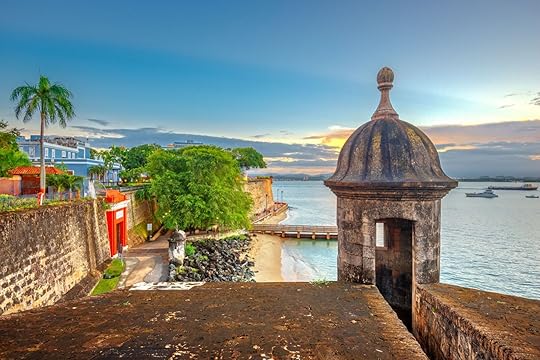
Droniak has gone from NYC to Puerto Rico and back in a single day. Photo; Sean PavoneShutterstock
Both Droniak and Smith try to get a bit more than four hours on their out-and-back day trips, and both say there are benefits to this type of travel. “Doing these day trips makes me realize how much time there actually is in a day, which trickles into real life,” says Droniak. “When I’m home doing things, I’m like, ‘Oh, actually, I could make time for this, because I just went to Puerto Rico and back for a day.” Being able to pack so much into his out-and-back day trips has helped him learn to make the most of each day, he thinks.
Most people will likely fall into one of two camps: the group inspired to pull out their travel backpacks and jet-set out to Mexico City for a day, or those like Kugel, who think all this “sounds like lunacy” mixed with a healthy dose of privilege. But out-and-back day-trippers claim there’s a major lesson to be learned: that of taking advantage of the limited time you do have and enjoying a full day –- even if it’s just one day – in an amazing destination thousands of miles away. 
April 10, 2025
Travel Editor Tested: Parmi’s Outdoor Apparel Is as Technical as It Is Chic
 Travel Editor Tested: Parmi’s Outdoor Apparel Is as Technical as It Is Chic
Travel Editor Tested: Parmi’s Outdoor Apparel Is as Technical as It Is ChicBy Katie Gavin
All photos: Parmi LifewearIf your closet looks anything like mine, there’s one winter jacket that always ends up doing the heavy lifting. It’s the one by the door — the default choice for cold mornings and spontaneous hikes. The rest make rare cameos when guilt kicks in.
When the seasons shift, it’s easy to fall into the habit of buying just one more layer. Maybe it’s a national park tee to support conservation efforts (or because it makes you feel like you could summit something before lunch) or a technical fleece that costs more than your mortgage payment and promises to wick moisture better than the other two you own. Either way, the cycle repeats — round and round like the spin cycle on an overloaded washing machine — new gear in, old gear out.

On a recent ski trip to Tignes in the French Alps, I was given a lightweight winter jacket by the Canadian clothing brand Parmi Lifewear to test. My initial reaction of “I don’t have room in my life for another shell” was quickly replaced with “I’ll make space.”
Tignes was unseasonably warm for November, and by midday, I was sweating through a bulky ski jacket with no layers to shed, sweltering on the chairlift like someone who dressed for an Arctic expedition but missed their flight out. The next day, I wised up and layered the Explore Jacket under a gilet, and finally felt like I could move. With my arms free, my turns were cleaner and everything just flowed; honestly, the shell alone would’ve done the job with a lightweight wick-away underneath. This unicorn jacket has breathability dialed in, excellent insulation, and a helpful inner pocket perfect for stashing your cell and whatever else you don’t want tumbling down the mountain.
After a few days of wearing it on the slopes, I caught up with head designer for the brand, Virginie Brunet. Brunet’s skill for creating technical clothing that is also seriously stylish is a breath of fresh air. Take the Explore Jacket. Its clean lines, use of matte fabric with just a touch of sheen, and tailored silhouette make it suitable for a ridgeline and out in town.
These days, it feels like every outdoor brand is trying to prove it can make gear that both performs on the mountain and looks good when grabbing beers after. While big names like Goldwin and Fjällräven have already blurred the lines between backcountry-ready and city-approved, Parmi, being a smaller family-run company, brings something more personal. Born in Mont-Tremblant, Quebec, Parmi nails that sweet spot between technical function and street-level style without trying too hard.

Parmi shot its winter collection in Tinges with TV personality Jean-Michel Péloquin, who travels the world in the comfort of Parmi’s collections.
Rewriting the rules of outdoor apparel through conscious consumptionI first learned about Parmi’s stance on fast fashion while chatting with Brunet. Later, I connected with the brand’s co-founders, twin sisters Michèle and Véronik Bastien, to dig deeper. As we talked, it became clear that Parmi isn’t trying to flood the market with trend-driven drops. Their goal is more straightforward but harder to pull off: make fewer pieces people want to wear for years. This approach relies on durable materials, classic fits, flexible collections built for capsule wardrobes, and gear designed to last beyond a single season.
The Bastien sisters hail from Mont-Tremblant, Quebec. The mountain resort village is an all-season outdoor playground for snow hounds, mountain bikers, trail runners — you name it. It’s also a community where you wouldn’t feel out of place rocking up to a bar fresh off the hill.

“When you live here [in Mont-Tremblant], outdoor activities are ingrained into everyday life, which is why having versatile clothing is so important,” Véronik says. The Bastien sisters have infused Mont-Tremblant’s status as a premium adventure destination into Parmi’s collections. Their apparel embodies both functionality and style, with minimalist designs and timeless colors. “The colors we are using are very important,” Michèle says. “You’ll never see garish primary colors or flashy over-the-top styles.”
The rise of athleisure has reshaped wardrobes around the world. The global athleisure market, valued at over $358 billion in 2023, is expected to nearly double by 2030. Big names like Patagonia and Arc’teryx helped pave the way and make much-loved gear and clothing, but there’s something to be said for turning your attention to smaller, emerging labels that deliver the same technical quality and are built to last. Parmi falls into that space. Many of its pieces are at a price point that reflects the intended longevity: technical tees around $100, lightweight jackets run about $200, and trail-to-town pants are in the $150 range.
With a shared background in finance and marketing and a successful venture in women’s cycling wear behind them, Michèle and Véronik launched Parmi Lifewear in 2021, driven by a vision to simplify and elevate the outdoor experience.
“Cycling was our foundation for five years,” Michèle says. “But with Parmi, we wanted to take that experience and build something bigger — clothing that adapts to how people actually live, where you don’t need a different outfit for every part of your day.”
That ethos carries into their newer collections, including cycling apparel designed for a shift in the culture. “People are riding in a different way,” Michèle observes. “If you look at our products, we don’t have that regular jersey with a zip down the middle. We wanted to create a more informal style for cycling gear.”
Rather than focusing solely on technical specs or performance built for elite athletes, Parmi designs with the everyday outdoor enthusiast in mind with gear that’s functional enough for a ride or hike but casual and comfortable enough to wear straight into the rest of your day.

At their Mont-Tremblant outpost, Michèle and Véronik Bastien and Virginie Brunet draw from the surrounding landscape to shape Parmi’s collections.
Sustainability beyond the marketing jargonThe impact of conscious clothing purchases is undeniable, given that about 34 billion pounds of textiles are disposed of in the United States each year. Many outdoor brands such as NEMO Equipment, Cotopaxi, and Outerknown are trying to combat this by leaning into circular production models — recycling, repairing, and reusing gear in an attempt to extend the life of products.
Parmi offers something similar with its patch repair services to mend minor rips in well-worn gear. The company also promotes a mindset of purchasing fewer, higher-quality pieces — pieces you’ll reach for again and again that don’t need to be replaced.
Parmi collaborates with European factories that follow sustainable energy, waste, and environmental practices. The brand employs mineral dyeing and digital printing techniques that reduce water, energy, and ink consumption by approximately 10 percent compared to traditional methods. It also incorporates recycled fabrics into its denim lines and selects materials that require less frequent washing, such as merino wool, which is naturally odor-resistant and breathable — thereby extending the lifespan of each garment and conserving water. Of course, there’s a fine line between producing clothing with a smaller environmental footprint and ensuring durability. Michèle explains that when choosing between a recycled fabric that’s less durable and a more robust alternative, opting for the latter can be more sustainable in the long run, since it reduces the need for frequent replacements.
Adding to that, the Bastien sisters will launch a Preloved Market this summer to sell items used in photo shoots or pieces that have minor defects. For consumers, it will be a great opportunity to score discounted must-haves and sell their own Parmi products. For the brand, it means less waste of otherwise perfectly good clothing and gear. The launch is expected to coincide with the outcome of the company’s pursuit of B Corp certification.
 Investment pieces for a capsule wardrobe
Investment pieces for a capsule wardrobe
Some of Parmi’s best-sellers, like the water-repellent Bridge Pants ($230, pictured above), offer technical performance for cycling and all-day comfort for everyday wear. The merino wool t-shirts ($110) are breathable and moisture-wicking, while staying effortlessly stylish in eight colorways. Pair them with the reversible lightweight vest ($216) for a polished, adaptable look that layers for evenings out or cold mornings in the mountains.
There’s no question that for many, Parmi’s pieces are investment items. But it fits well with the mindset of buy less, save more, and begin building a capsule wardrobe.
Parmi’s collections lean on uncluttered designs and refined palettes to help you create a wardrobe that actually works. “We have excellent repeat business,” Michèle says. “People like the fit and the quality. We’ve been in the market for two years, and some customers have ordered over 20 times. They’re returning not to swap out a t-shirt for a different color, but to invest in new pieces that expand their wardrobe into a fuller, more functional collection.”
While versatility is the thread running through every piece, Parmi doesn’t cut corners on performance. “Of course, you need some specific gear. For biking, for example, you need a decent bib,” Véronik clarifies. “But overall, we’ve created items people want to wear for all activities.”
The balance between form and function, simplicity and sport keeps people coming back. Not for a new version of the same thing, but to build something that lasts. To make that process easier, Parmi also offers one-on-one personal shopping assistance via email or the online chat function, helping you figure out what you need based on your lifestyle and existing wardrobe. 
Where to Play, Eat, and Stay in New York’s Finger Lakes to Honor Women

Hear the words Upstate New York and you might conjure scenes of sprawling forests, summer days by glinting water bodies, or heavy snowfall and cozy cabins. Naturally, those images also apply to the Finger Lakes, a subregion of Upstate New York that’s centered around 11 long and narrow lakes. It’s a sight to behold, sure, but there’s a lot more to the Finger Lakes than beautiful landscapes.
The Finger Lakes has a long history of backdropping important historical movements — specifically, those led by important women. Long before American women won the right to vote in 1920, Susan B. Anthony fought for suffrage in Rochester, New York. Meanwhile, Harriet Tubman guided enslaved people to freedom from her home in Auburn, New York, not long after escaping from slavery herself in 1849. Their fearless activism shaped both history and the region, and the women of today’s Finger Lakes continue to make a lasting impact.
For a visit that embraces not just the beauty of the Finger Lakes but also its significance in women’s history, here’s a closer look at the historical sites you have to see, the woman-owned businesses you’ll love to support, and the dining you won’t want to miss, from Rochester to Auburn and the must-see places in between.
Rochester
Photo: Sean Pavone/Shutterstock
Things to doMemorial Art Gallery
Photos: Mion Edwards
Rochester’s Memorial Art Gallery (MAG) is the kind of museum that encourages you to take your time, with a simple layout that keeps the focus on the artworks on display. Its permanent collection — an accumulation of 13,000-plus artworks spanning prehistory to today — celebrates a wide range of artistry. That includes cross-continental Indigenous creations, works from antiquity, contributions from the European and American traditions, and a growing body of work from contemporary artists the world over.
One highlight if you’re visiting with women’s history in mind is an exhibition titled Composing Color: Paintings by Alma Thomas, which will be on display through May 2025. Thomas was the first Black woman to graduate from Howard University with a fine arts degree. Her abstract artwork is inspired by “nature, the cosmos, and music,” according to MAG.
My recommendation: Try to visit on a day when the gallery is hosting a special community event to get a better sense of the Finger Lakes community while you’re there.
Memorial Art Gallery: 500 University Ave, Rochester, NY 14607
National Susan B. Anthony Museum & House
Photos: Karlsson Photo/Shutterstock and Mion Edwards
In Rochester, tour the home of Susan B. Anthony (a key figure in the women’s suffrage movement) to learn about her upbringing, her arrest for voting illegally in the 1872 presidential election, her role in starting the Revolution newspaper that ran between 1868 and 1872, and her connections with other abolitionists. This home — now a National Historic Landmark — was her residence for 40 years and the place she lived until her death. After my tour, I had a deeper understanding of how truly brave Anthony was during her time.
National Susan B. Anthony Museum & House: 17 Madison St, Rochester, NY 14608
Let’s Have Tea Sculpture
Photo: Mion Edwards
Directly across from Susan B. Anthony’s home is a sculpture called Let’s Have Tea that memorializes Anthony alongside her friend, fellow civil rights leader, and Rochester native Frederick Douglass. What moved me the most was seeing previous visitors honor Anthony’s fight for women’s right to vote by placing “I Voted” stickers on the statue.
Let’s Have Tea Sculpture: 31 Madison St, Rochester, NY 14608
Mount Hope Cemetery
Photo: Steven Bodnar/Shutterstock
Tucked away in a park-like setting, America’s first municipally owned Victorian cemetery spans over 190 acres. Not only is Mount Hope Cemetery a peaceful spot to visit, but it’s also the final resting place of notable Rochester natives including Susan B. Anthony and Frederick Douglass. Their walking graves and within walking distance of one another — standing by either (or both) is a humbling experience that gives weight to the great impact they had on history.
Mount Hope Cemetery: 1133 Mt Hope Ave, Rochester, NY 14620
Where to eatBrown Hound Downtown
Photo: Mion Edwards
Brown Hound Downtown is located within the Memorial Art Gallery, which not only makes it a convenient place to grab a bite on a busy sightseeing day but also like you’ve stumbled upon a real in-the-know spot. The bistro, bakery, and full bar is known for its all-American menu — one standout dish is the crispy fried chicken and waffle (and don’t be shy with the sriracha syrup).
Brown Hound Downtown: 500 University Ave, Rochester, NY 14607
La BolaView this post on InstagramA post shared by La Bola (@labolarochester)
Located inside Mercantile on Main, Rochester’s food hall, La Bola serves a fusion of Spanish and Mediterranean flavors. Menu items include patatas bravas with spicy bravas sauce, sherry-glazed pork belly, and a deconstructed flatbread featuring boneless romesco chicken thigh accompanied by hummus, basmati rice, spiced yogurt, pickled onions, and more.
La Bola: 240 E Main St, Rochester, NY 14604
Canandaigua
Photo: Real Window Creative/Shutterstock
Things to doOntario County Courthouse
Photo: Mion Edwards
Check out the exterior of the Ontario County Courthouse, a historical building where Susan B. Anthony was tried in 1873 for “illegal voting” in the federal election. She was found guilty and fined $100. Her trial became a pivotal movement in the fight for women’s rights, which was ultimately realized 48 years later. Standing on those steps reminded me that every protest, no matter how small it may seem in the moment, can be a catalyst for real change.
Ontario County Courthouse: 27 North Main Street, Canandaigua, NY 14424
New York Kitchen
Photos: Mion Edwards
My wine tasting here was like none other I’ve done (and trust me, I’ve been to plenty). Not only did I learn about wine notes and pairings — tasting crisp whites, full-bodied reds, and local cheeses — but New York Kitchen also took it to the next level by hosting a panel of women winemakers and industry leaders from the Finger Lakes community.
The afternoon was spent sharing personal stories about the love of wine-making and the need to continue uplifting the next generation of winemakers. It wasn’t that long ago that female winemakers were rare in the Finger Lakes and beyond, but today, more and more women are making their mark on the wine industry. I learned how each woman there carved out a space in a traditionally male-dominated field and how the region is evolving to become more inclusive.
New York Kitchen: 800 South Main Street, Canandaigua, NY 14424
Where to eatPatty’s Place
Photos: Mion Edwards
Although it hasn’t always been Patty’s Place, this is the oldest continuously operating restaurant in Canandaigua, with eateries serving the city from this site for more than 130 years. Patty’s Place is a great choice for breakfast for the whole family or anyone passing through town, with a hometown-diner-like atmosphere and a come-as-you-are vibe. I got the Patty’s Special, featuring two eggs, crispy home fries, and bacon — a classic American way to start the day. Adding a piece of blueberry muffin bread french toast enhances the experience.
Patty’s Place: 33 South Main Street, Canandaigua, NY 14424
Simply Crepes
Photo: Mion Edwards
This cozy spot in Canandaigua is known for its sweet and savory crepes made with fresh ingredients (and an aroma that’ll have you salivating as soon as you enter). My recommendation: Get the chai latte paired with the Boston crème crepe, filled with chocolate mousse, crème brûlée custard, bananas, crushed shortbread cookies, and drizzled with chocolate sauce.
Simply Crepes: 101 S Main St, Canandaigua, NY 14424
Bloomfield
Photo: Mion Edwards
Things to doGreen Riding Retreats
Photos: Mion Edwards
In a word, I’d describe my horseback riding experience with Green Riding Retreats as therapeutic — a chance to reconnect with both myself and nature. The instructor, Jessica Green, has over 40 years of experience working with horses — and you can tell. While riding, Jessica fostered a safe, enjoyable, and educational experience. After a few first-time jitters, I felt at ease as we ventured through the terrain and forest, spotting deer along the way.
Green Riding Retreats: Liberty Stables, 4318 Buckelew Road, Bloomfield, NY 14469
Geneva
Photo: Jay Yuan/Shutterstock
Things to doTrestle 31View this post on InstagramA post shared by Trestle Thirty One (@trestle_31)
Founded by Nova and Brian Cadanatre, Trestle 31 is a family-run vineyard in the Finger Lakes region. Nova, a Master of Wine, brings her extensive knowledge and experience in the Finger Lakes and Napa to the winery, which produces a range of whites from rieslings to chardonnays, as well as select rosés and reds. But wine isn’t the only talent the family brings to Trestle 31 — the family’s creativity also shines through the intricate artwork Nova’s mother, artist Linda Wiliams McCune, creates.
Trestle 31: 436 Exchange St, Geneva, NY 14456
Three Brothers Wineries & EstatesView this post on InstagramA post shared by Three Brothers Wineries (@3broswine)
With not one but four tasting rooms — as well as an on-site brewery and cafe — this winery has something for everyone. Sip on your favorite wine or sample your way through them all. Whether you’re looking to try hand-crafted wines, brews, hard ciders, or craft sodas, a visit to Three Brothers promises a fun, laid-back spot for a tasting with friends or a day on the town.
Three Brothers Wineries & Estates: 623 Lerch Rd, Geneva, NY 14456
Where to eatKindred FareView this post on InstagramA post shared by Kindred Fare (@kindredfare)
This casual, woman-owned restaurant embraces the shared meal experience, blending big portions and bold flavors. Favorites include crispy honey hot cauliflower wings with creamy dill dipping sauce; flavorful friendship fries topped with pickled red onions, buttermilk dressing, spicy aioli, feta cheese, hot sauce, and scallions; and the pork belly rice bowl featuring turmeric rice, miso-glazed pork belly, a fried egg, pickled onions, spicy mayo, peanuts, and sesame seeds. If you still have room for dessert, the peanut butter mousse pie with a chocolate cookie crust and house-made chocolate sauce is a great sweet treat.
Kindred Fare: 512 Hamilton St., Geneva, NY 14456
Where to stayOne standout experience during my visit to the Finger Lakes was my stay at The William Smith Inn, which offers a cozy and historic retreat in a beautifully restored 19th-century home. Each room is thoughtfully decorated with antique furnishings and modern amenities, and guests get a delicious homemade breakfast served each morning.
When you’re not enjoying the property, the inn is conveniently located near the Finger Lakes Wine Country where you can explore over 100 wineries.
William Smith Inn: 600 Castle Street, Geneva, NY 14456
Seneca Falls
Photo: Dennis MacDonald/Shutterstock
Things to doWomen’s Rights National Historical Park
Photo: NPS
In 1848, the small Finger Lakes hamlet of Seneca Falls became the backdrop for a big historical moment: the nation’s first official women’s rights convention, aptly named the Seneca Falls Convention. This is widely considered the event that formally started the women’s suffrage movement — in part thanks to a rallying cry called the “Declaration of Sentiments” that was written and delivered by activist Elizabeth Cady Stanton, mirroring the language of the Declaration of Independence. The Women’s Rights National Historical Park commemorates this significant event during which 300 women and men gathered to declare that “all men and women are created equal.”
A couple of doors down, do your part to support a woman-owned Seneca Falls boutique by browsing for souvenirs at Blush by CVDesigns. The shop carries trendy clothing, charming home decor, and unique jewelry.
Women’s Rights National Historical Park: 136 Fall St, Seneca Falls, NY 13148
National Women’s Hall of FameView this post on InstagramA post shared by National Women's Hall of Fame (@womenofthehall)
A short walk across the It’s a Wonderful Life Bridge spanning Seneca Falls’ Van Cleef Lake will take you from the Women’s Rights National Historical Park to the National Women’s Hall of Fame, which is located in a repurposed knitting mill. The site bills itself as “the nation’s first and oldest nonprofit organization and museum dedicated to honoring and celebrating the achievements of distinguished American women.” Exhibits and events range from educational showcases of little-known female illustrators during the early 20th century to meet-the-author opportunities that celebrate the female creatives of today.
National Women’s Hall of Fame: 1 Canal St., Seneca Falls, NY 13148
Muranda Cheese Company
Photo: Mion Edwards
Muranda Cheese is technically in Waterloo, not Seneca Falls, but it’s worth the drive for a cheese-tasting experience (regardless of the fact that that drive takes less than 10 minutes). This was my first-ever cheese tasting, and it didn’t disappoint — it featured a fun variety of interesting cheeses, ranging from dill and scallion to spicy jalapeno, all of which is produced using high-quality milk from Finger Lakes farms.
Once acclaimed dairy farmers themselves, the family behind Muranda Cheese Company now uses its farm to produce more than 20 artisan cheeses, which you can sample on-site and are also likely to see on winery menus around the Finger Lakes.
Muranda Cheese Company: 3075 NY-96, Waterloo, NY 13165
Where to eatFlint and Stave
Photo: Mion Edwards
Perfect for a date night or an otherwise cozy evening meal, Flint and Stave is a chef-owned establishment specializing in American-style tapas and heartier entrees. The restaurant is proud to use fresh and locally sourced ingredients wherever possible to whip up standout dishes like seafood risotto, which comes with seared scallops and grilled shrimp.
Flint and Stave: 84 Fall Street, Seneca Falls NY 13148
Where to stayThe Gould HotelLocated next to the Women’s Rights National Historical Park, the Gould Hotel combines history with a modern twist, having originally opened in 1920 and having since seen all the necessary updates to both the boutique building and the hotel’s amenities. The rooms are cozy with a contemporary feel, providing travelers with a sleek, stylish, and convenient place to rest. Even if you don’t book a room, swing by on Saturday night for live music.
The Gould Hotel: 108 Fall St, Seneca Falls, NY 13148
Auburn
Photo: WirestockCreators/Shutterstock
Things to doEqual Rights Heritage Center
Photos: Mion Edwards
If you’re looking to be inspired by past Civil Rights leaders, this interactive exhibit showcases the important role New Yorkers played in advancing equal rights through the abolition of slavery, the women’s rights movement, and more. Be sure to check out the statue of Harriet Tubman — she’s holding a lantern, symbolizing the light she used to guide enslaved individuals to freedom.
Equal Rights Heritage Center: 25 South St., Auburn, NY 13021
Harriet Tubman National Historical Park
Photo: Zack Frank/Shutterstock
Central to the Harriet Tubman National Historical Park is the Thompson Memorial African Methodist Episcopal Zion Church where Harriet Tubman’s funeral was held. After years of restoration, the landmark has been brought back to how it looked in 1913 when she died. Tubman helped raise money to build the church and was a member for over 20 years. The nearby parsonage now serves as the park’s welcome center when it’s open.
Harriet Tubman National Historical Park: 47 Parker St, Auburn, NY 13021
Harriet Tubman Home
Photo: Zack Frank/Shutterstock
Visiting Harriet Tubman’s home in Auburn was one of the most moving experiences of my trip to the Finger Lakes. Earlier that day, I attended the Harriet Tubman Proclamation ceremony, during which a proclamation was made in honor of Harriet Tubman Day. It made being on the porch and steps where she used to be an honor. The white building, known as the Tubman Home for the Aged, was established by Harriet Tubman to care for elderly and poor community members. Harriet spent her final days there. Past the driveway, there is a brick house where Harriet lived.
Harriet Tubman Home Property: 181 South St., Auburn, NY 13021
Fort Hill CemeteryAt Fort Hill Cemetery, you can visit Harriet Tubman’s burial site, which is marked by a headstone engraved with the dedication “Servant of God, Well Done.” Being at the cemetery filled me with a profound sense of emotion and gratitude. The site, which is often adorned with mementos from visitors, is a quiet reflective space — the kind that invites you to pause and feel gratitude.
Fort Hill Cemetery: 19 Fort St Cemetery, Auburn, NY 13021
Where to eatAt Long Last RestaurantView this post on InstagramA post shared by At Long Last (@atlonglast.ny)
This woman-owned restaurant serves an elevated brunch and breakfast in a bright and inviting setting. The natural sunlight that shines into this place in the morning creates a sunny and welcoming atmosphere. Notable dishes include fried pickles, crispy hash browns, and a steak, egg, and cheese bagel. Tip: Get there early because this place is popular and tends to fill up the later it gets.
At Long Last: Restaurant, 3193 E Genesee St, Auburn, NY 13021
Prison City Brewing
Photo: Mion Edwards
Prison City Brewing is a popular local brewery known for its craft beers and vibrant atmosphere. Try the beer-braised steak nachos topped with yellow corn tortilla chips topped with black bean salsa, pickled onions, queso, guacamole, and beer-braised shredded beef. The fish and chips is another winner, consisting of lightly breaded cod and served with house fries and caper dill tartar sauce.
Prison City Brewing: 28 Ovid Street, Auburn, NY 13021 
Matador Network's Blog
- Matador Network's profile
- 6 followers



